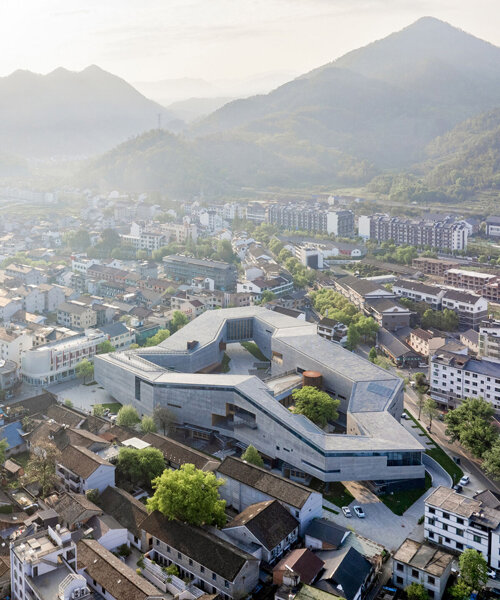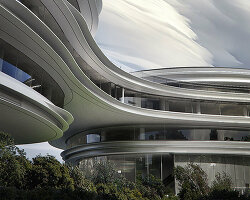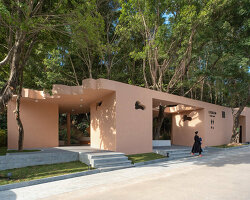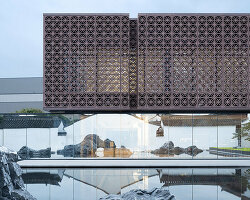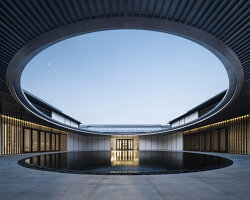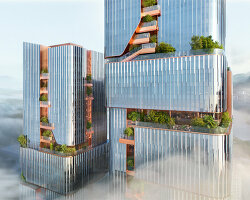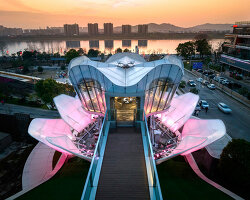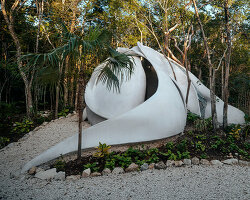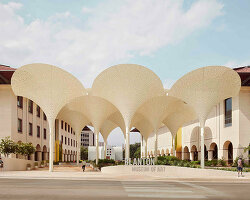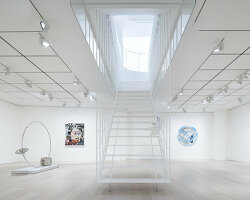line+ unveils Zhejiang Lishui Guyanhuaxiang Art Center
Zhejiang Lishui Guyanhuaxiang Art Center, designed by line+ studio under the leadership of Co-Founder and Chief Architect Meng Fanhao, opened to the public on April 28, 2024. The center is the largest art complex in LiShui city, China, serving as a central hub for cultural exhibitions and activities, and aims to seamlessly integrate art and tourism. The design seeks to harmonize contemporary art spaces with the town’s daily life by creating an organic connection between the art center and the town.
The project emphasizes a dual approach — accommodating both contemporary art exhibitions and the daily activities of town residents. It incorporates functional public spaces that extend the art center’s reach, blending various uses such as commerce, culture, leisure, and art curation. By juxtaposing abstract art and vivid daily life, the design balances institutional and public aspects, establishing a seamless transition between artistic and residential areas.
The art center is situated in a historic residential area, surrounded by mountains and close to the Ou River’s Daxi section, reflecting a strong sense of local life. During the planning phase, the traditional concept of an art public building was redefined, blending the art center with the rhythm of town life. Considering the long-term operation of such a large-scale art center, relying solely on the existing artistic industry foundation of the town for exhibition content proved insufficient. Thus, a comprehensive approach to operations was formulated, with a focus on integrating various commercial, cultural, entertainment, leisure, art curation, and educational activities.
The design emphasizes four aspects: the functionality of artistic institutions, the extension of public spaces, diversified functions, and regional expression. This approach allows for a balance between abstract art and everyday life, achieved through thoughtful dialogue between volume and material expression, as well as the convergence of spatial and temporal dimensions.
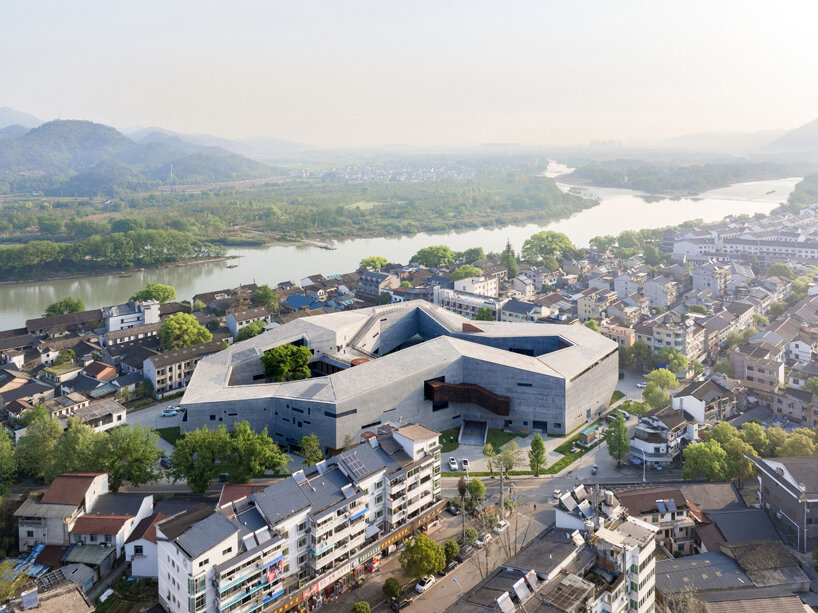
line+ studio designs Zhejiang Lishui Guyanhuaxiang Art Center in LiShui | image by Dong Image
art center’s architectural design Balances Form and Function
The architectural design of the art center navigates the delicate balance between its institutional role and its integration into the surrounding urban fabric. With a site area of 13,129.92 sqm and a floor area ratio of 1.05, the project strategically employs large-scale structures alongside smaller-scale elements to ensure efficient circulation and functional diversity.
By situating the building close to the site’s red line boundary, the design respects the existing street boundaries while creating a seamless integration with the surrounding streets and alleys. Two enclosed courtyards, one large and one small, enhance the internal spatial dynamics while maintaining an open posture through boundary setbacks and corner elevations. The upper portion of the building houses the art exhibition functions, characterized by a striking suspended structure that mirrors the surrounding mountainous landscape. In contrast, the lower part of the building caters to the daily needs of the neighborhood, with small box spaces arranged to accommodate various retail and leisure activities. This vertical juxtaposition of institutional and public aspects defines the architectural identity of the art center.
The center embraces its public role by integrating elements of everyday life into its design. Through careful planning, the architectural team has incorporated into the design the familiar typologies of squares and building blocks serving as important carriers of public activities in the town, realized through three strategies.
Prioritizing accessibility and integration with its surroundings, larger-scale squares and elevated spaces have been strategically placed at key points along the streets, inviting pedestrians to engage with the building. The ground floor layout has been carefully planned to seamlessly blend with the existing spatial context of the surrounding streets and alleys. Multiple commercial volumes, designed to reflect the scale of nearby residential structures, create a harmonious streetscape and enhance the human scale of the architecture. Inside the complex, elevated walkways on the second floor break up large spaces, adding visual interest and functionality. Various-sized courtyard squares further contribute to the center’s public appeal, providing versatile spaces for town gatherings and community activities, rooted in the tradition of communal spaces found in towns.
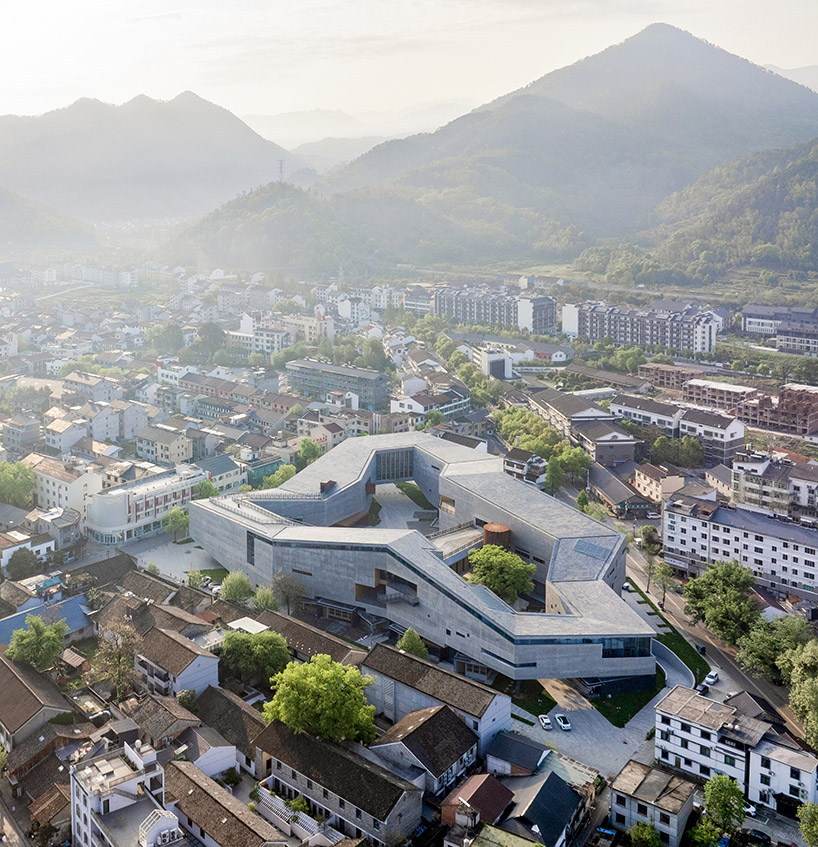
the center stands as the largest art complex in the region, integrating art and tourism | image by Dong Image
Dynamic Exhibition Space creates Immersive Narratives
The exhibition space within the art center engages in innovative design and spatial storytelling. Suspended above the bustling town, it comprises interconnected galleries and corridors that guide visitors through a seamless spatial journey. Structured around the undulating architectural form, the exhibition space unfolds a narrative, with distinct phases of exposition, development, climax, and conclusion. This thoughtful layout offers curators a unique canvas for crafting engaging exhibitions.
Visitors embark on their journey at street level, traversing through open spaces and courtyards before ascending to the rooftop via gentle steps, sloping ramps, and suspended bridges. Along the way, the integration of transparent and translucent materials blurs the boundaries between art and daily life, fostering immersive encounters that evoke both surprise and contemplation. In the predominantly monochromatic interior, a striking red metal rusted staircase serves as a unifying element, punctuating the space with its architectural presence. This departure from the conventional ‘white box’ gallery aesthetic seamlessly connects the interior with the exterior, enhancing the overall spatial experience.
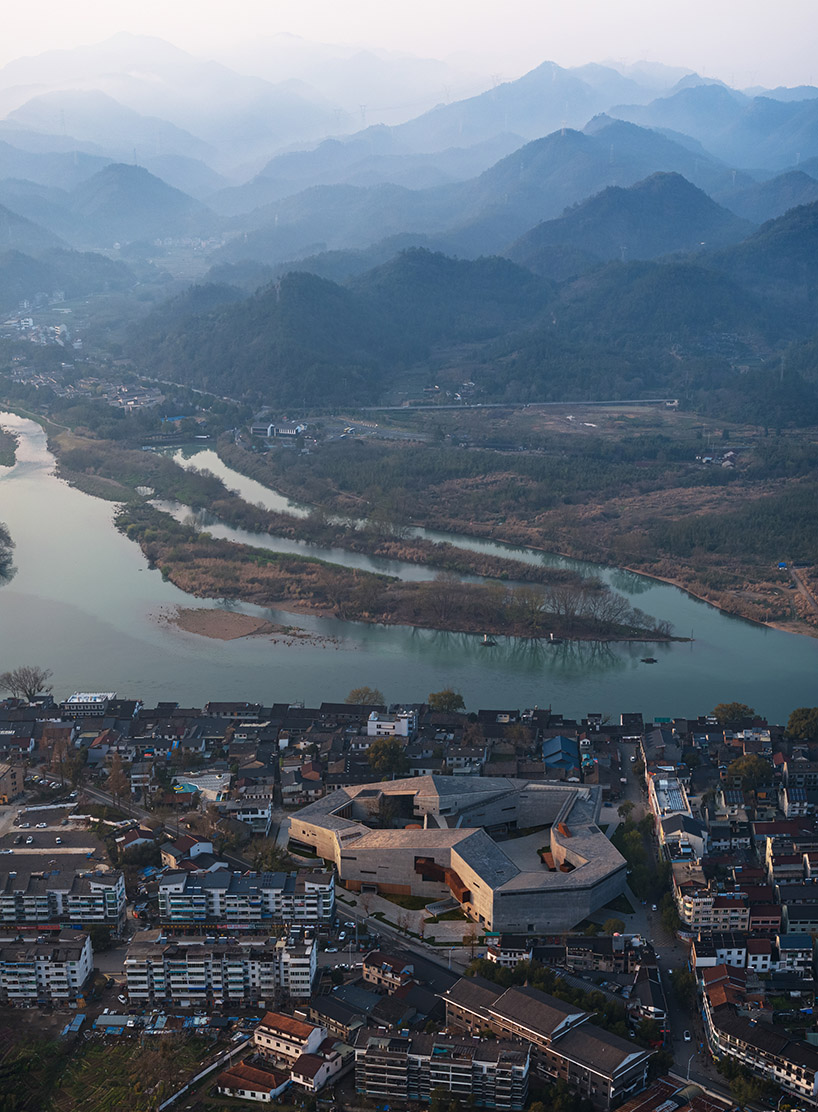
the design harmonizes contemporary art spaces with the town’s daily life | image by schranimage
line+ achieves Structural Innovation and Material Harmony
The architectural composition of Zhejiang Lishui Guyanhuaxiang Art Center confronts significant challenges in both its structural form and material selection. The irregular large-scale cantilevered design presents a unique form, while the choice of materials seeks to foster a harmonious dialogue between spaces of varying scales.
To encourage pedestrian flow and establish the art center as a vibrant hub for daily activities, the building incorporates several large cantilevers and elevations. A steel structure, chosen for its feasibility and cost-effectiveness, supports the upper portions of the building, with trusses reinforcing areas with substantial spans. Skybridges, extending in multiple directions from the lobby, guide visitors to the rooftop platform, imparting a sense of lightness as they suspend from the roof beams using cable rods.
The exterior facade predominantly features board-formed concrete, renowned for its warm tones and textured surface, which serve to mitigate the imposing scale of the structure and evoke an elegant ambiance. To circumvent the burdensome weight of cast-in-place concrete, decorative concrete and aerated concrete blocks are employed, significantly reducing structural risks and construction costs. Thinly poured wooden formwork concrete, coupled with reusable composite formwork, ensures the seamless integration of vertical and horizontal joints, preserving the facade’s continuity.
At the ground level, commercial spaces are arranged in a staggered manner, echoing the characteristics of the ancient town. Blue bricks, small green tiles, and weather-resistant steel plates are utilized to maintain continuity with the surrounding village texture, infusing warmth and color at a human scale. Carefully designed paving integrates the commercial volumes with the site’s spatial memory, enhancing the sense of place.
Vertical components, comprising faux wood grain aluminum panels and wood-molded concrete, reinforce the architectural integrity while imparting a warm and inviting texture. This combination creates dynamic light and shadow effects within the building, enhancing the interior ambiance.
Echoing the undulating terrain, the roof serves as a prominent facade element, with the rooftop viewing platform offering an immersive exhibition experience. Slate tiles, chosen for their compatibility with the ancient town’s environment, are meticulously laid out in alternating shades to create a cohesive yet detailed roofscape.
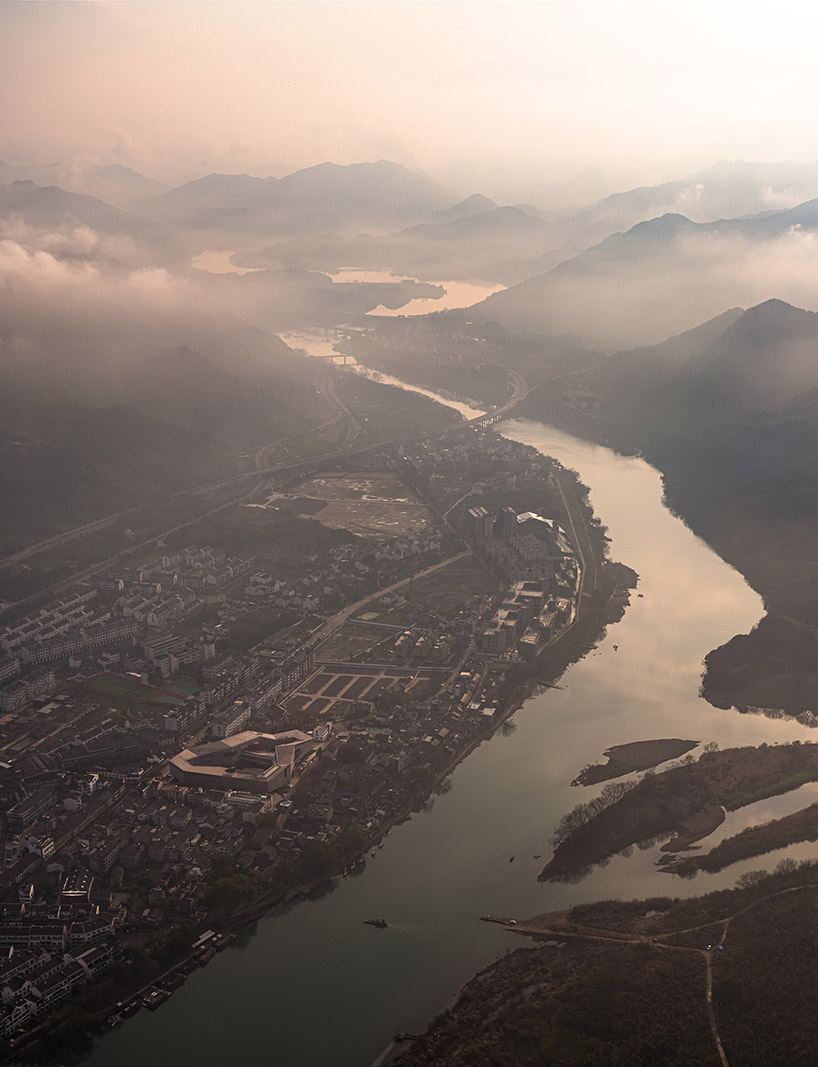
the project accommodates both contemporary art exhibitions and town activities | image by schranimage
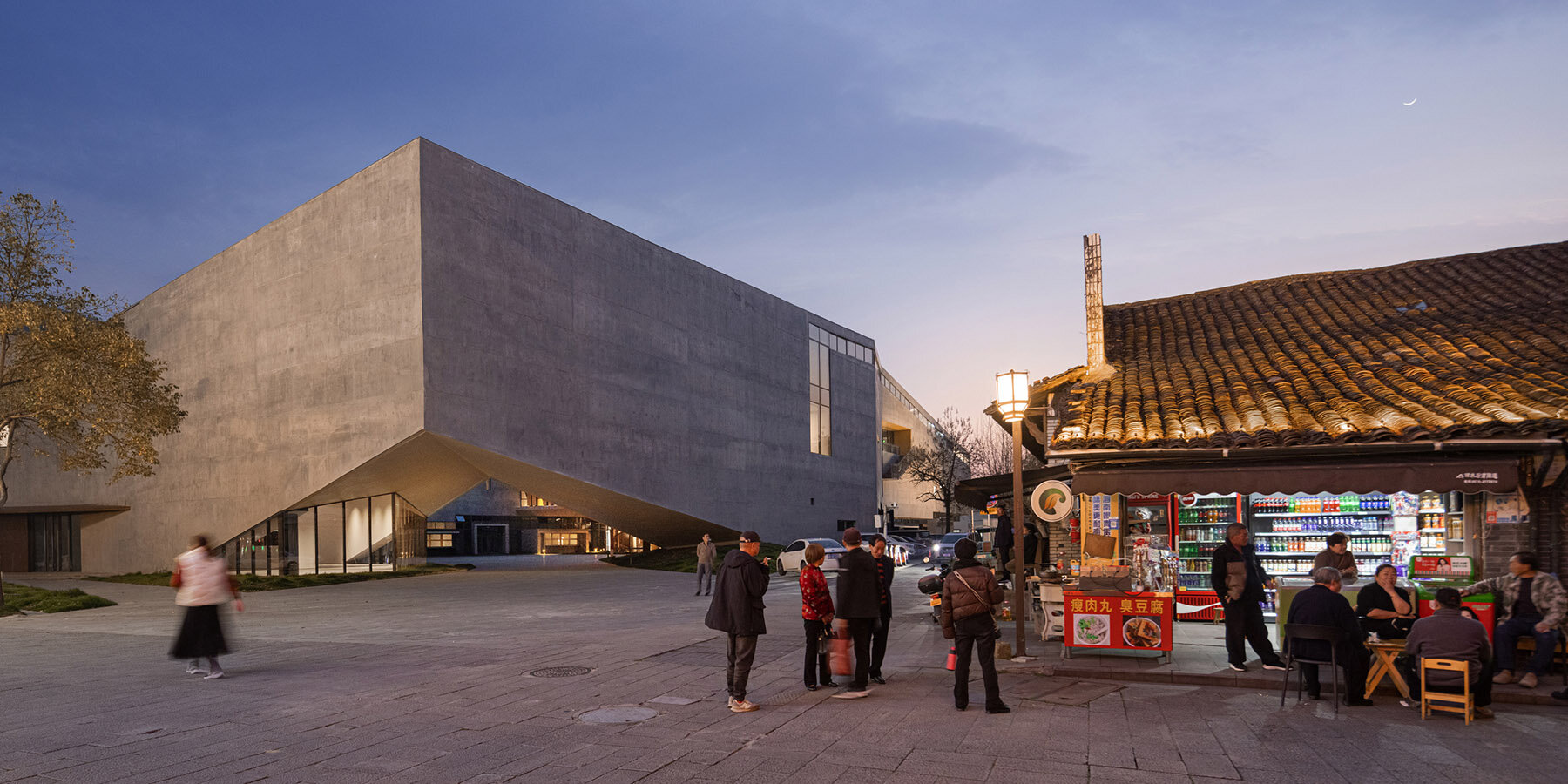
the project blends various uses such as commerce, culture, and leisure | image by schranimage
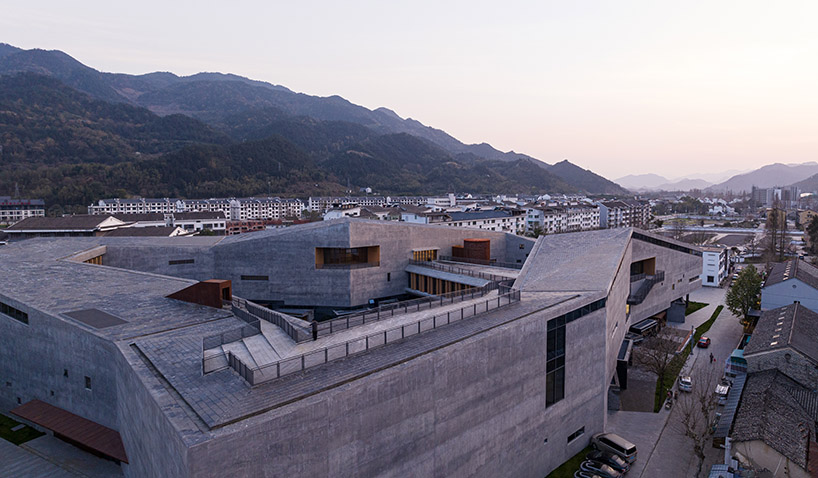
the center reflects a strong sense of local life, surrounded by mountains | image by schranimage
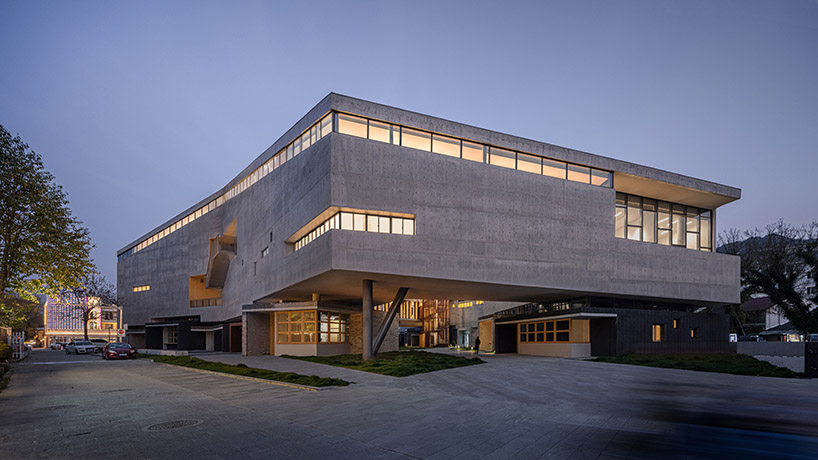
the design balances abstract art with everyday life through thoughtful dialogue | image by schranimage
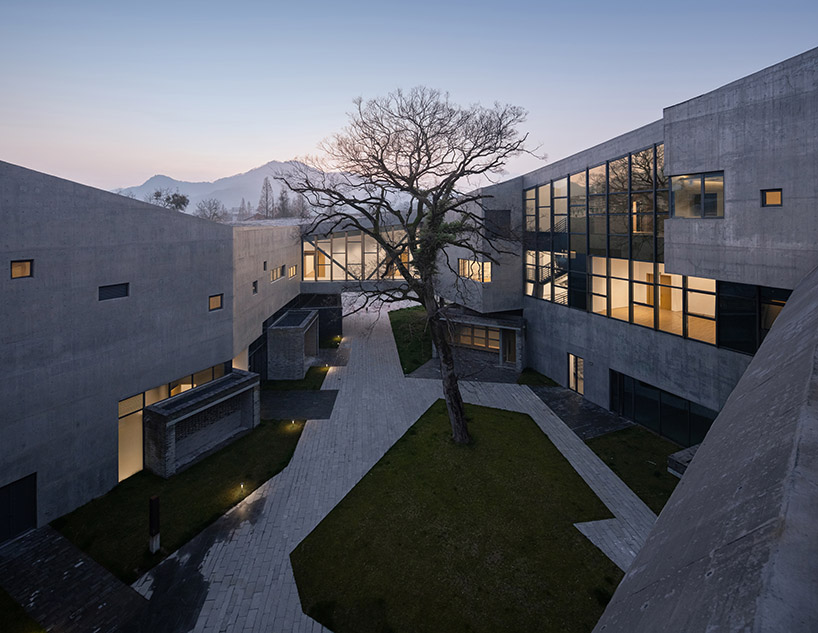
enclosed courtyards enhance spatial dynamics, maintaining an open posture | image by schranimage
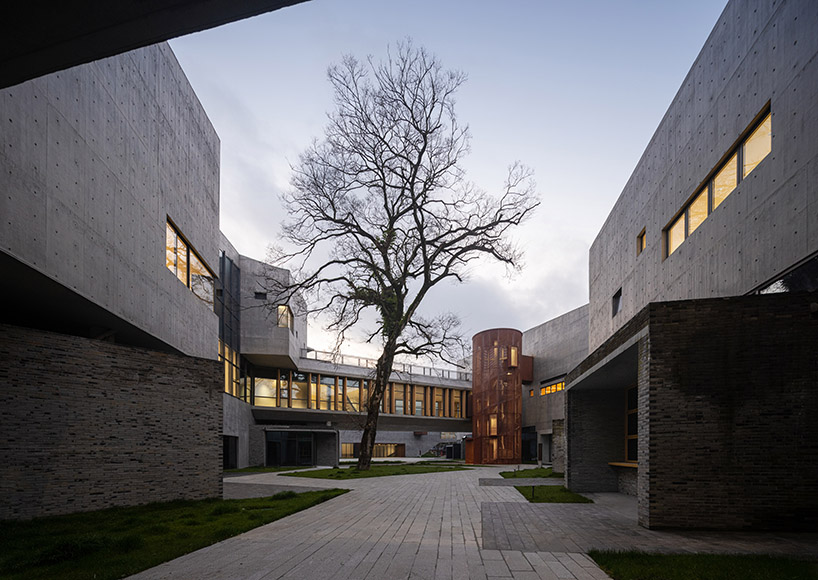
the upper part features a striking suspended structure, echoing the landscape | image by schranimage
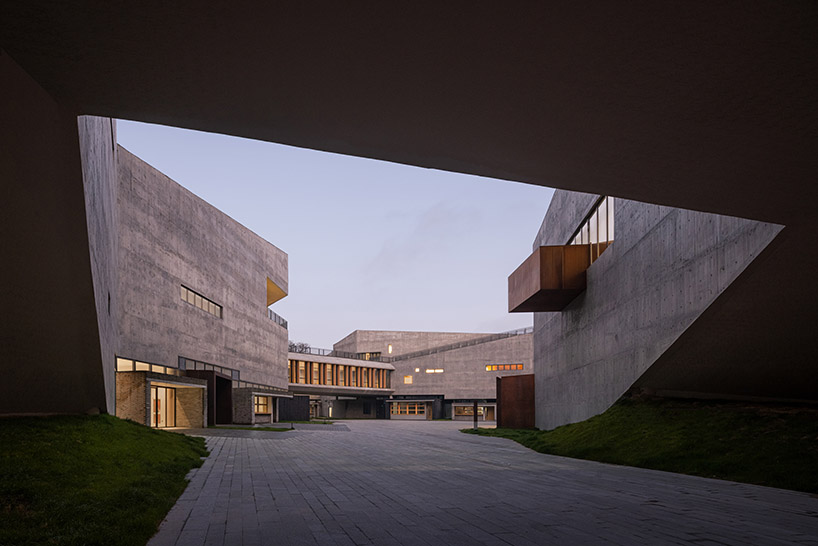
larger-scale squares and elevated spaces invite pedestrian engagement | image by schranimage
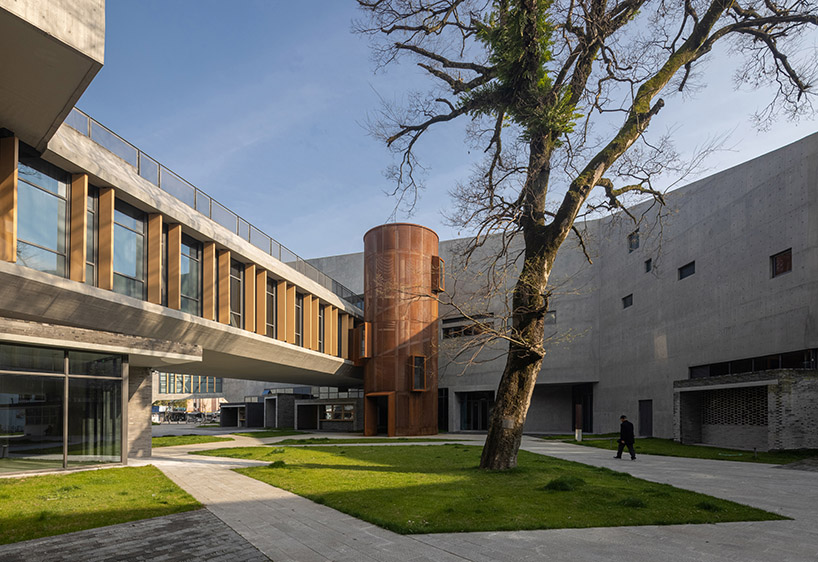
elevated walkways break up large spaces, adding visual interest | image by schranimage
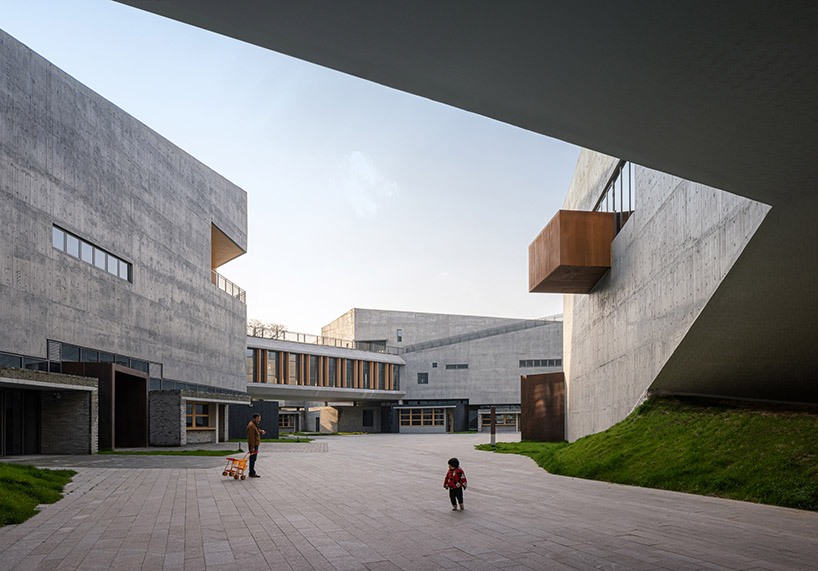
various-sized courtyards enrich the center’s public appeal | image by schranimage
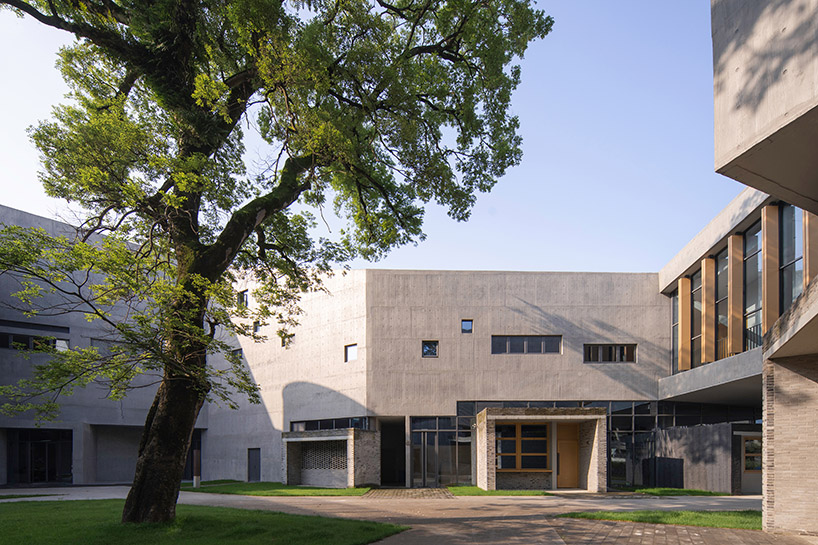
visitors embark on a spatial journey from street level to the rooftop | image by Dong Image
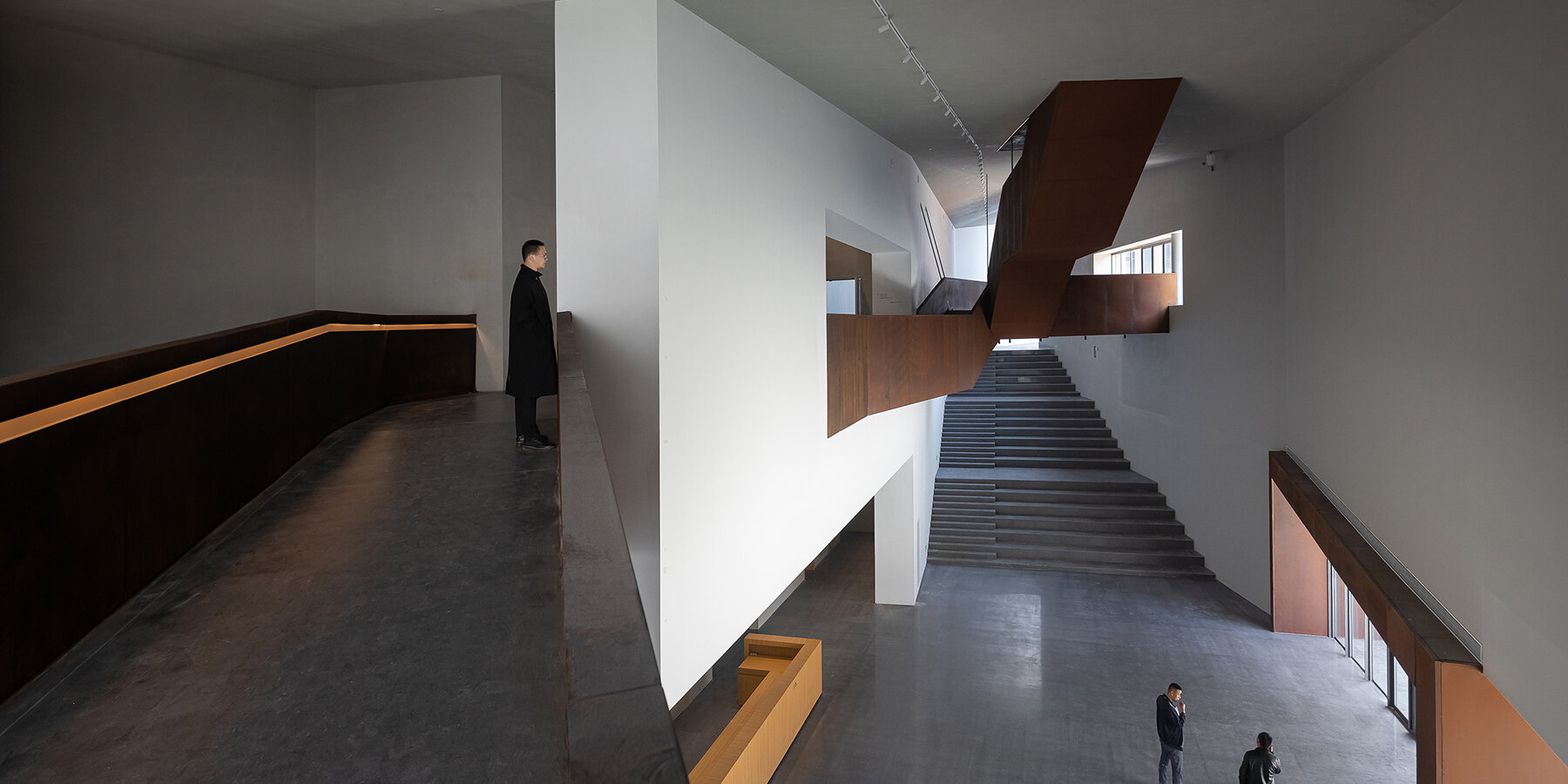
a red metal rusted staircase punctuates the predominantly monochromatic interior | image by schranimage
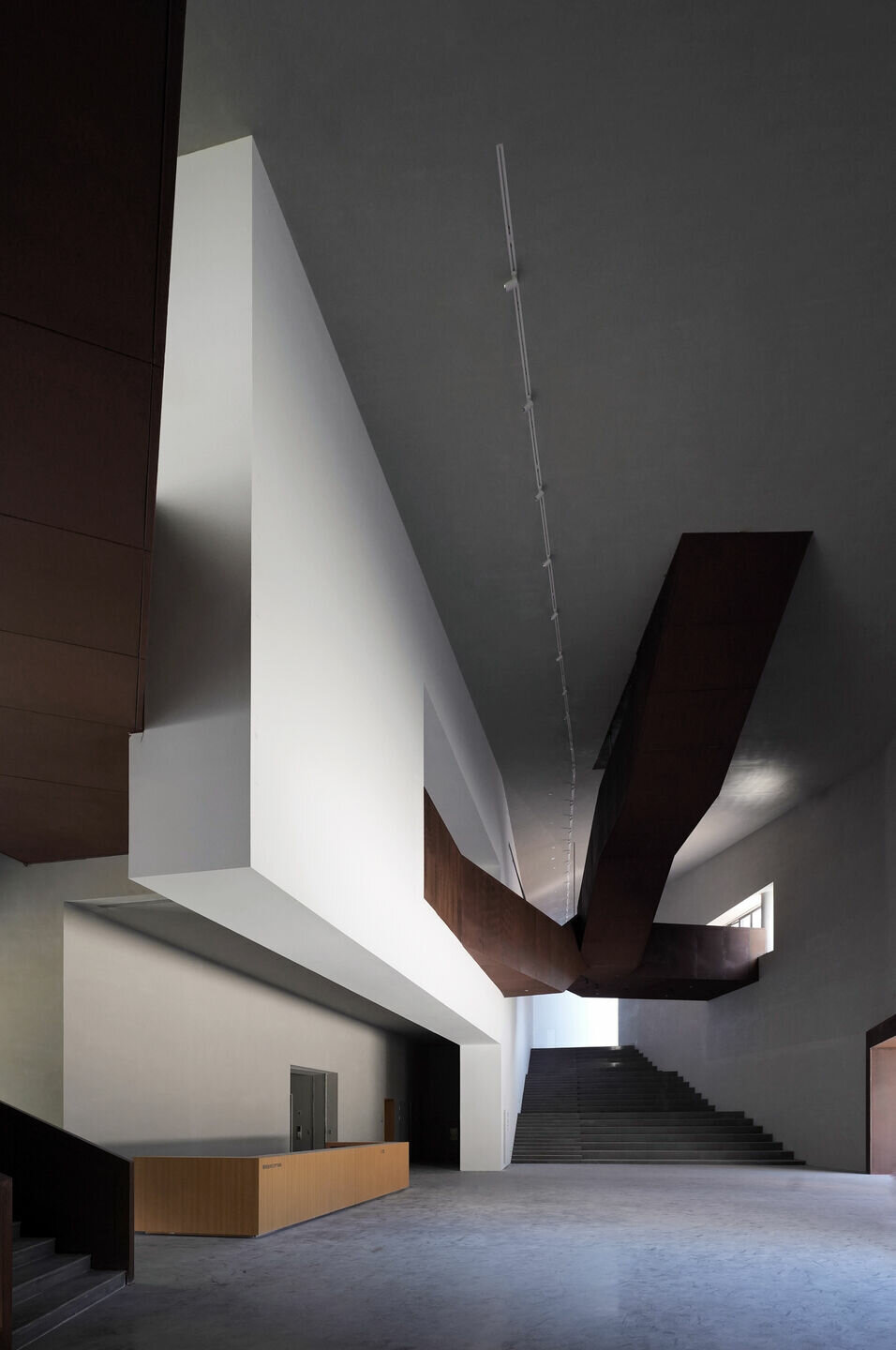
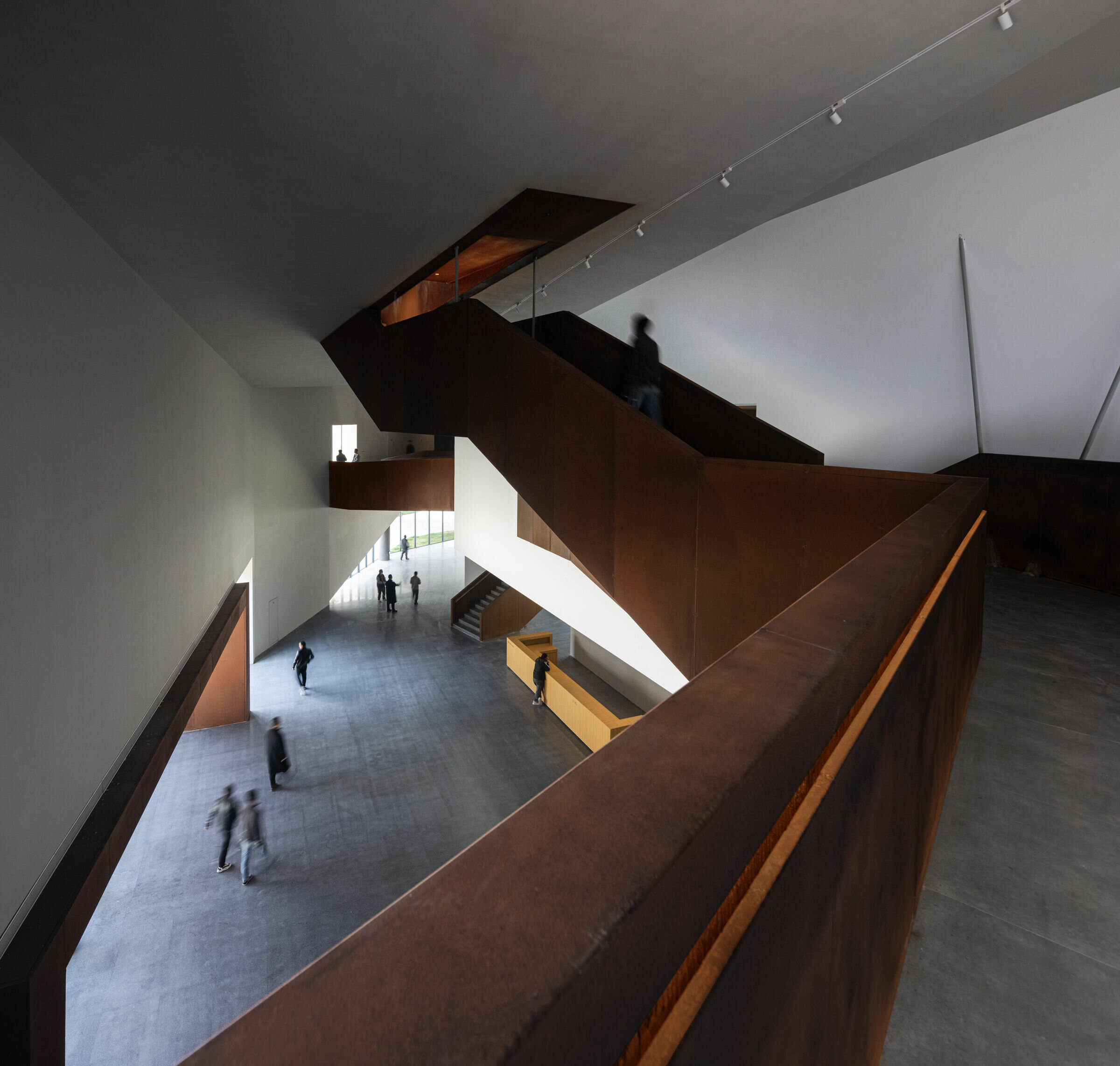
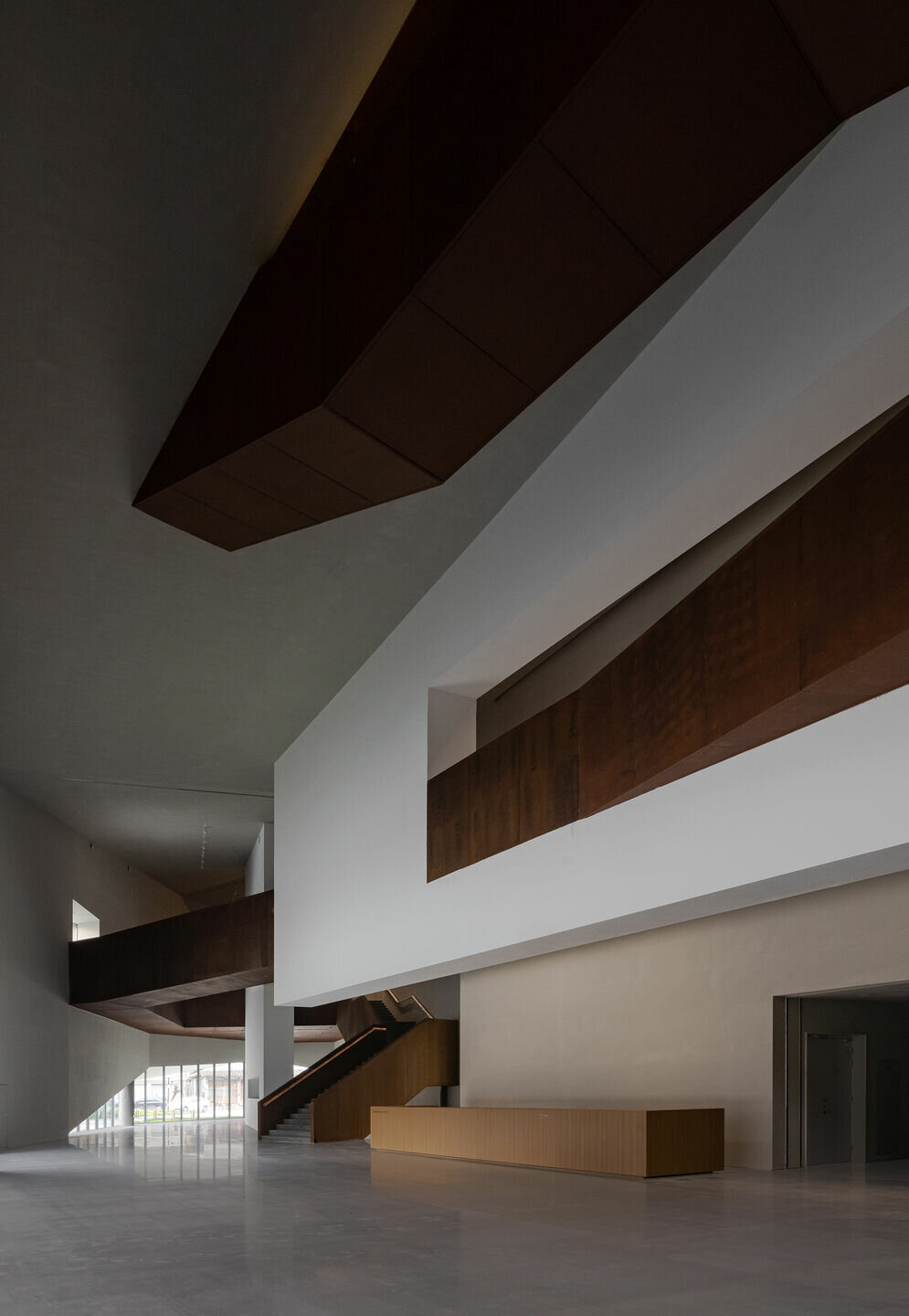
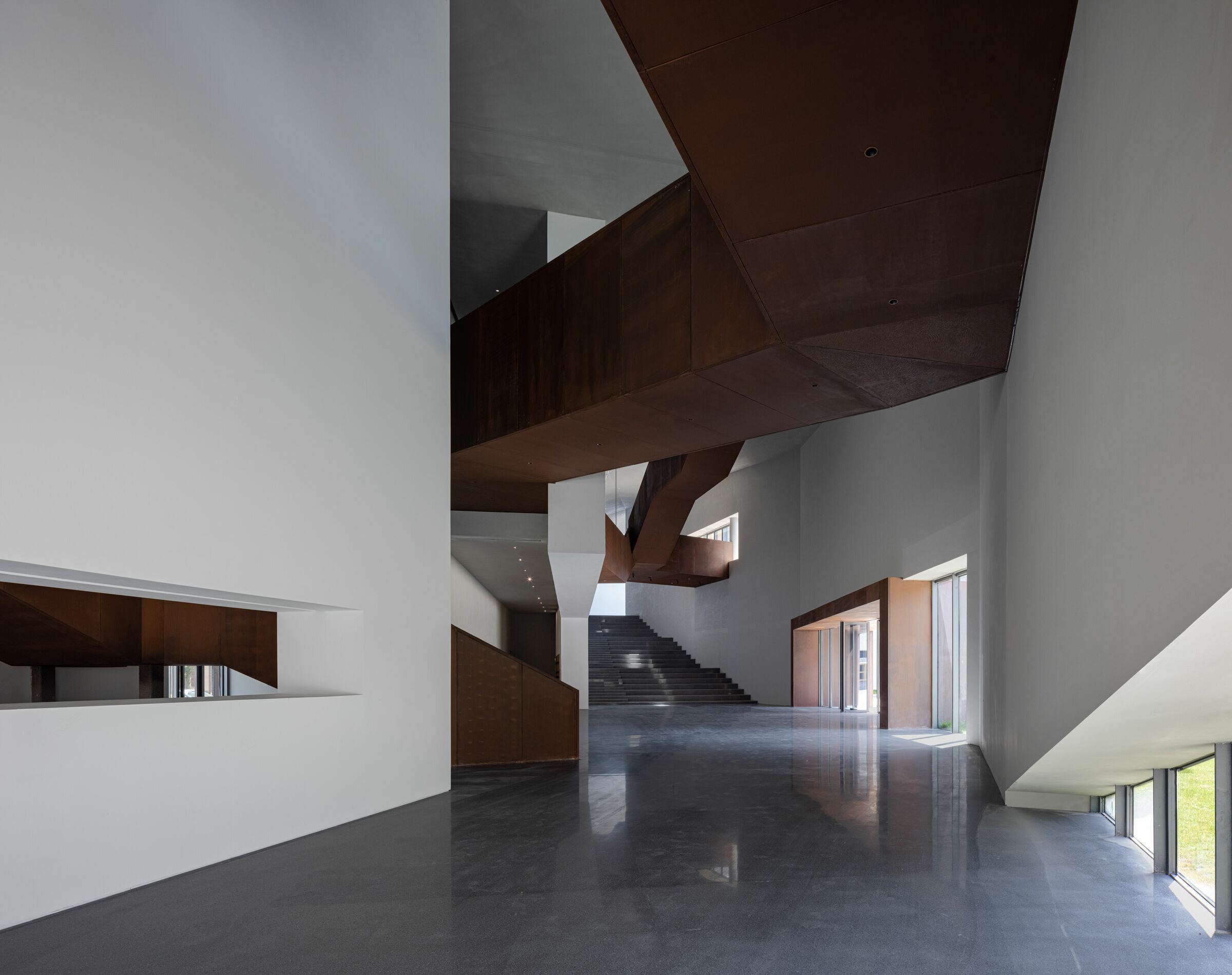
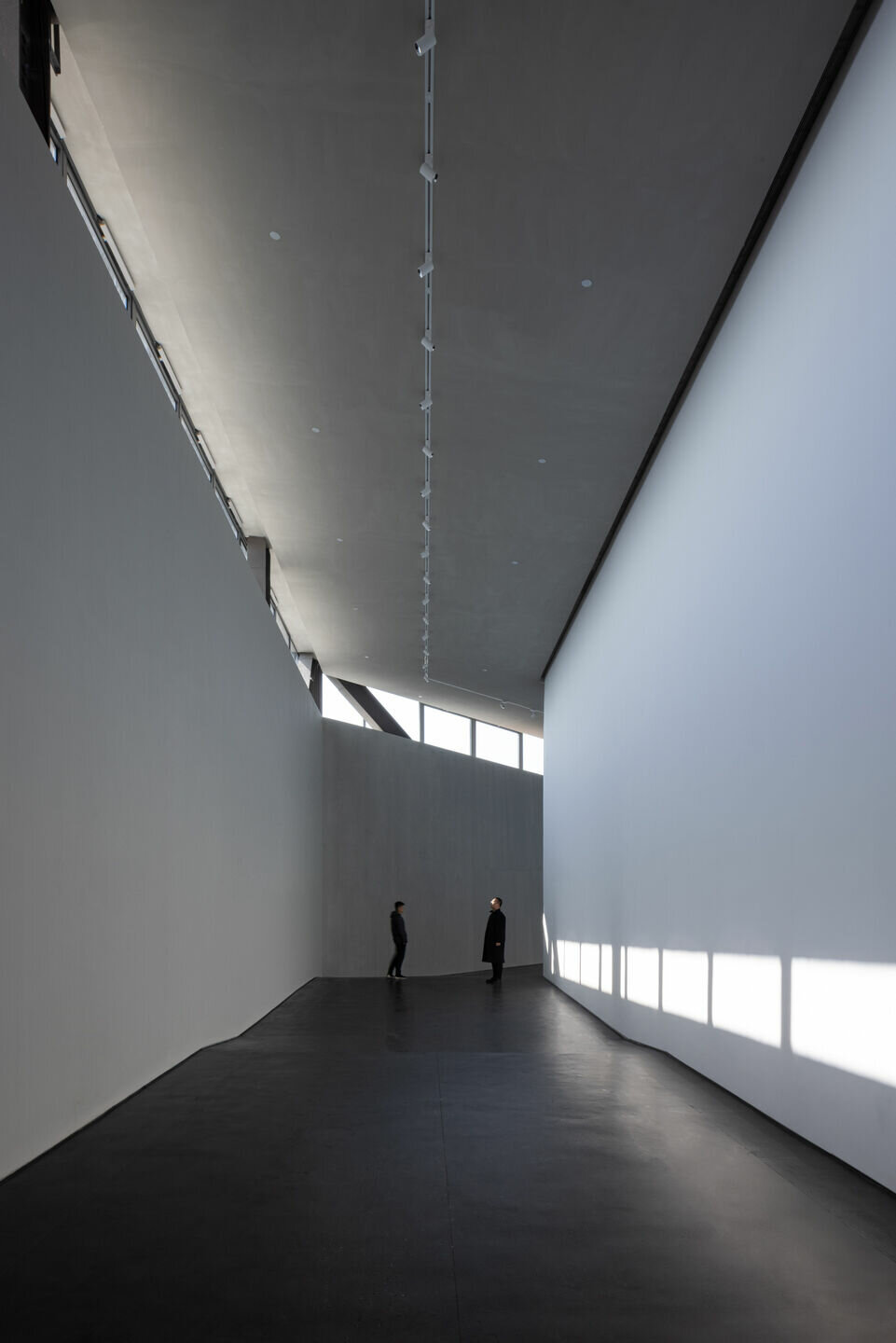
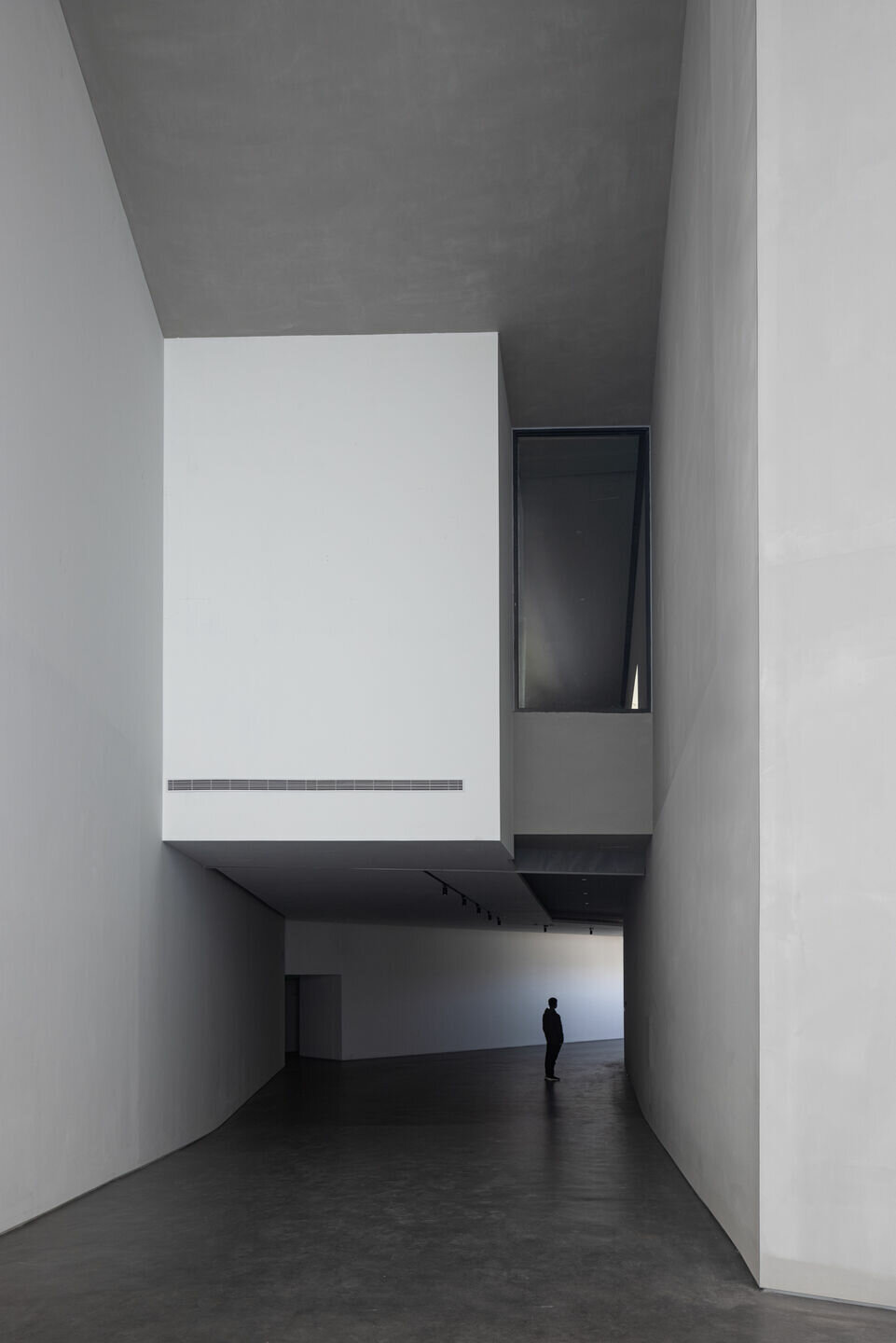
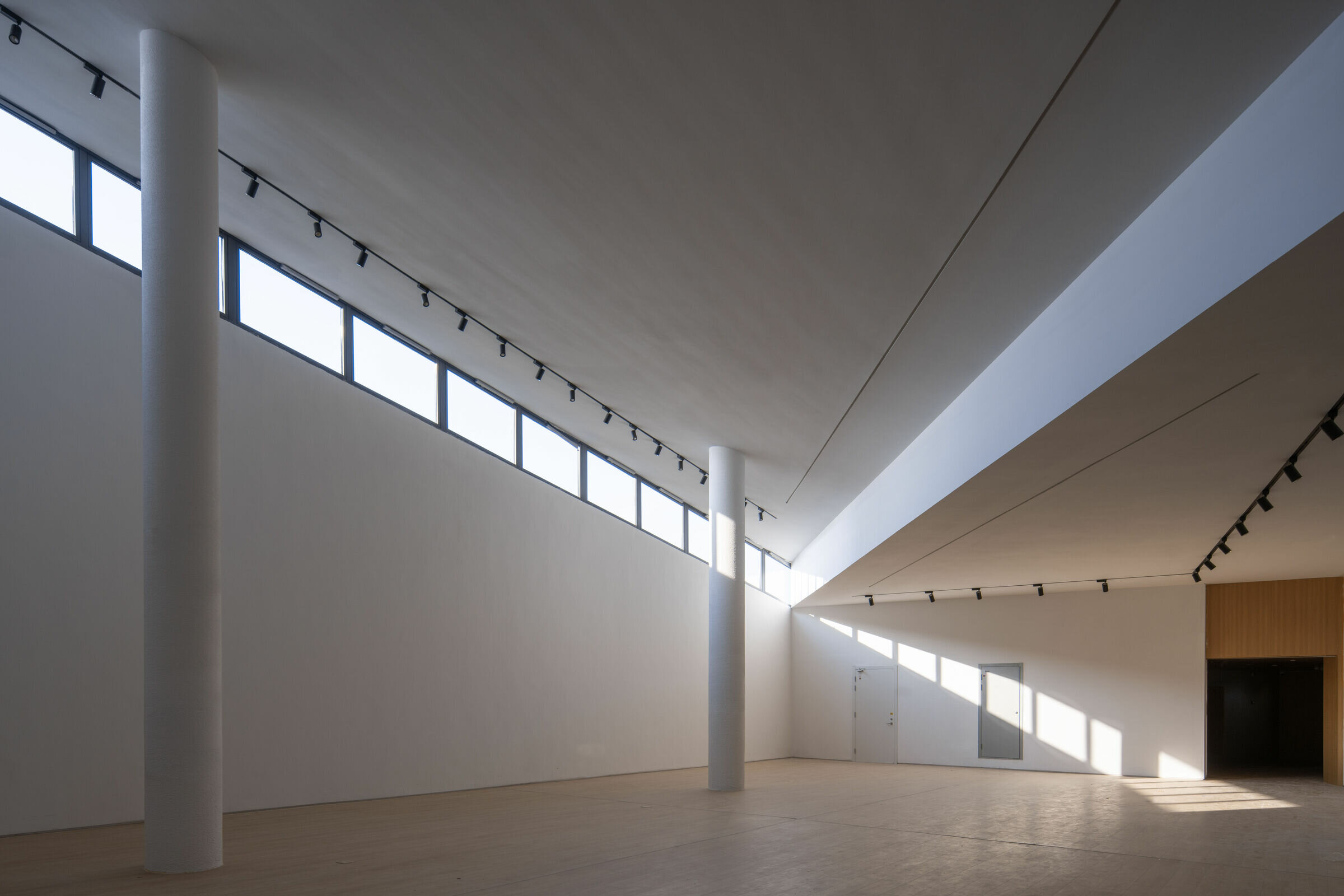
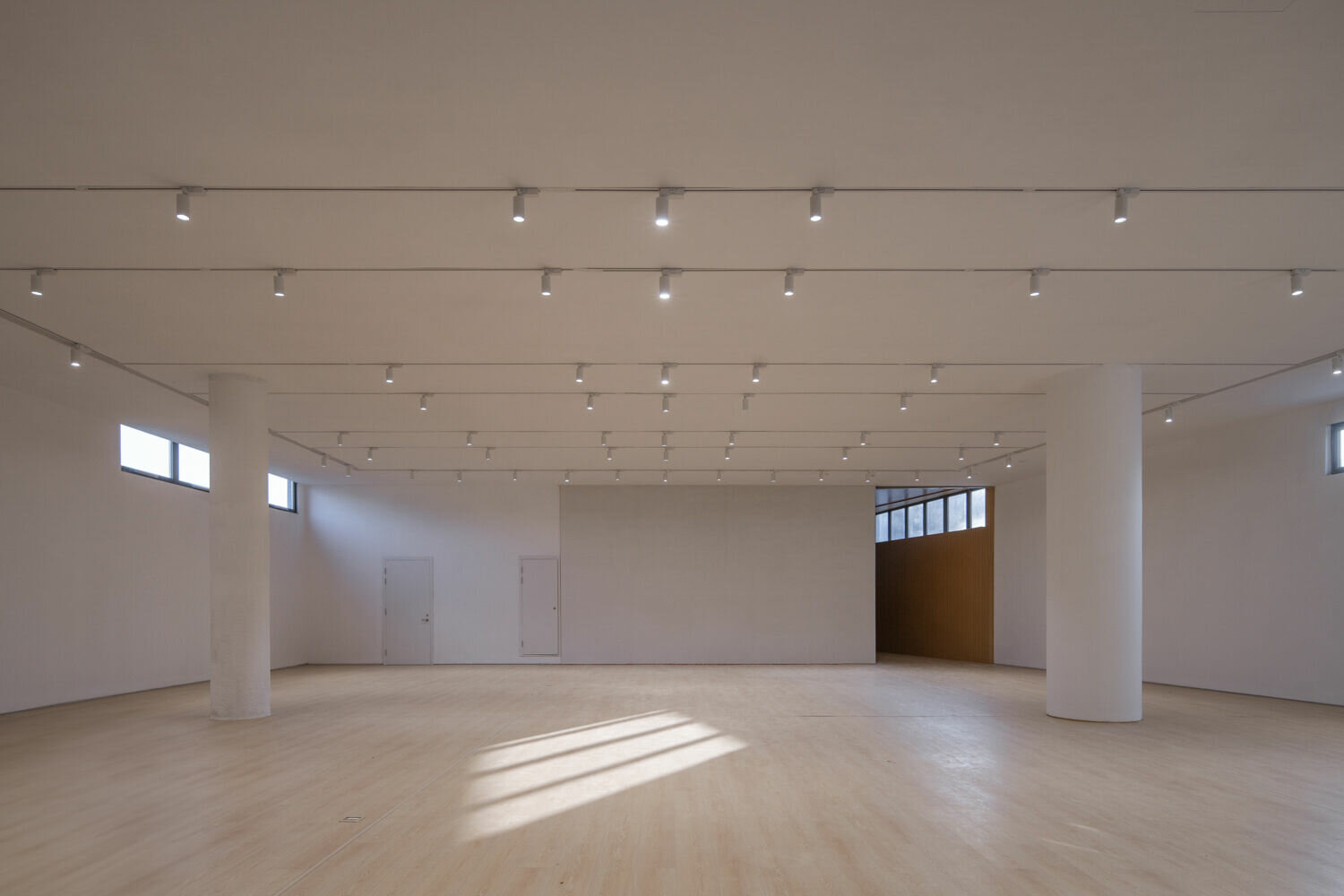
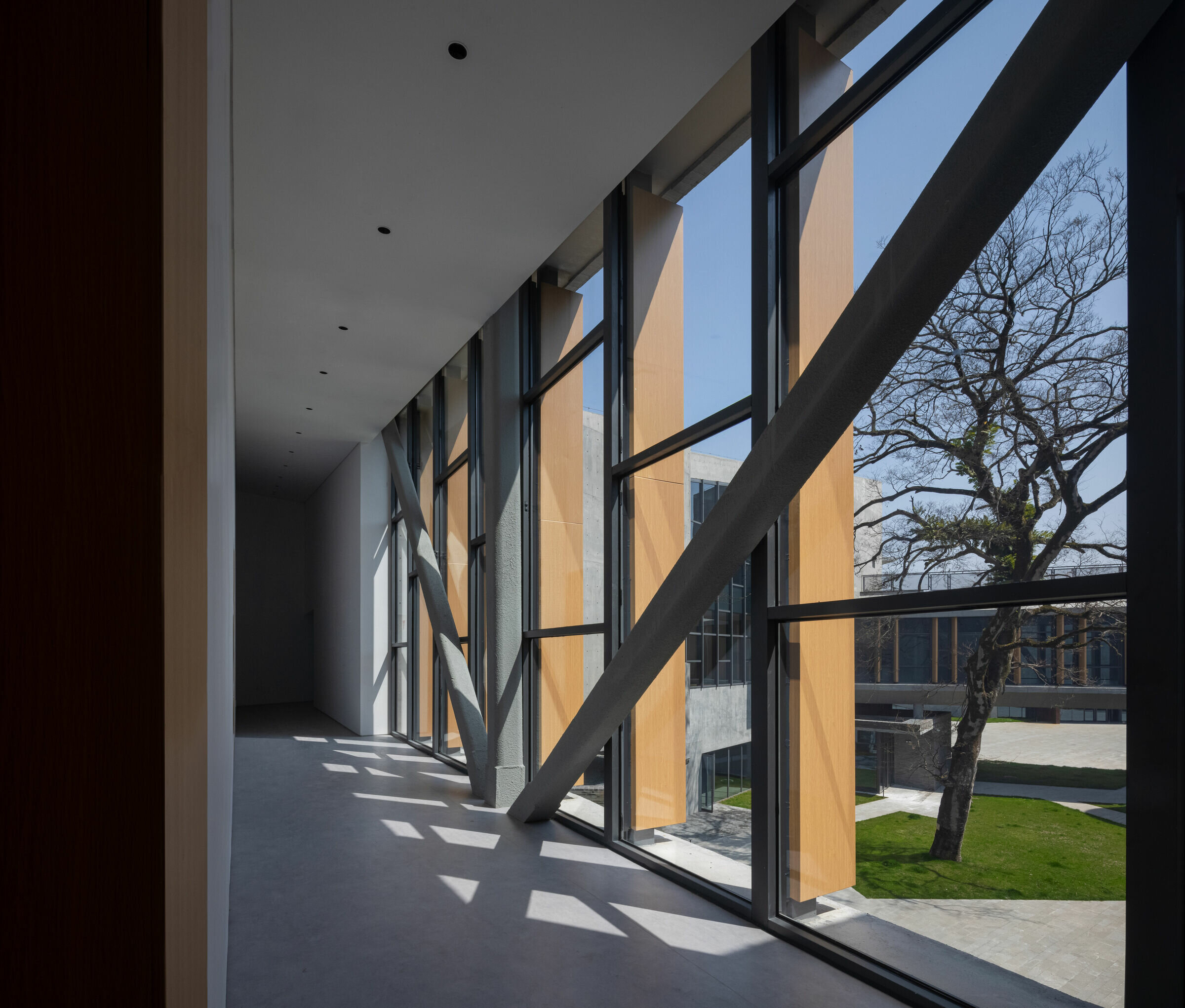
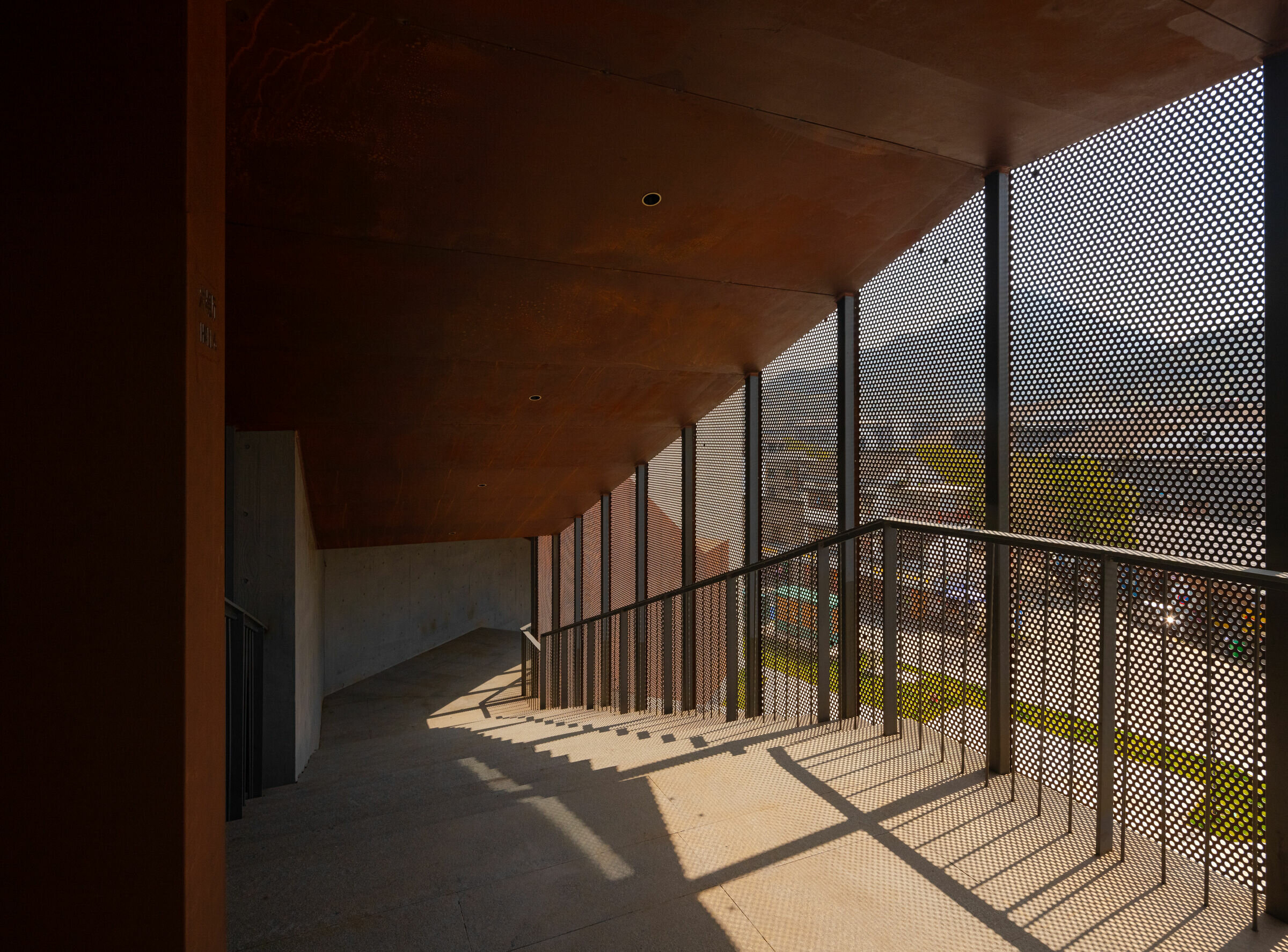
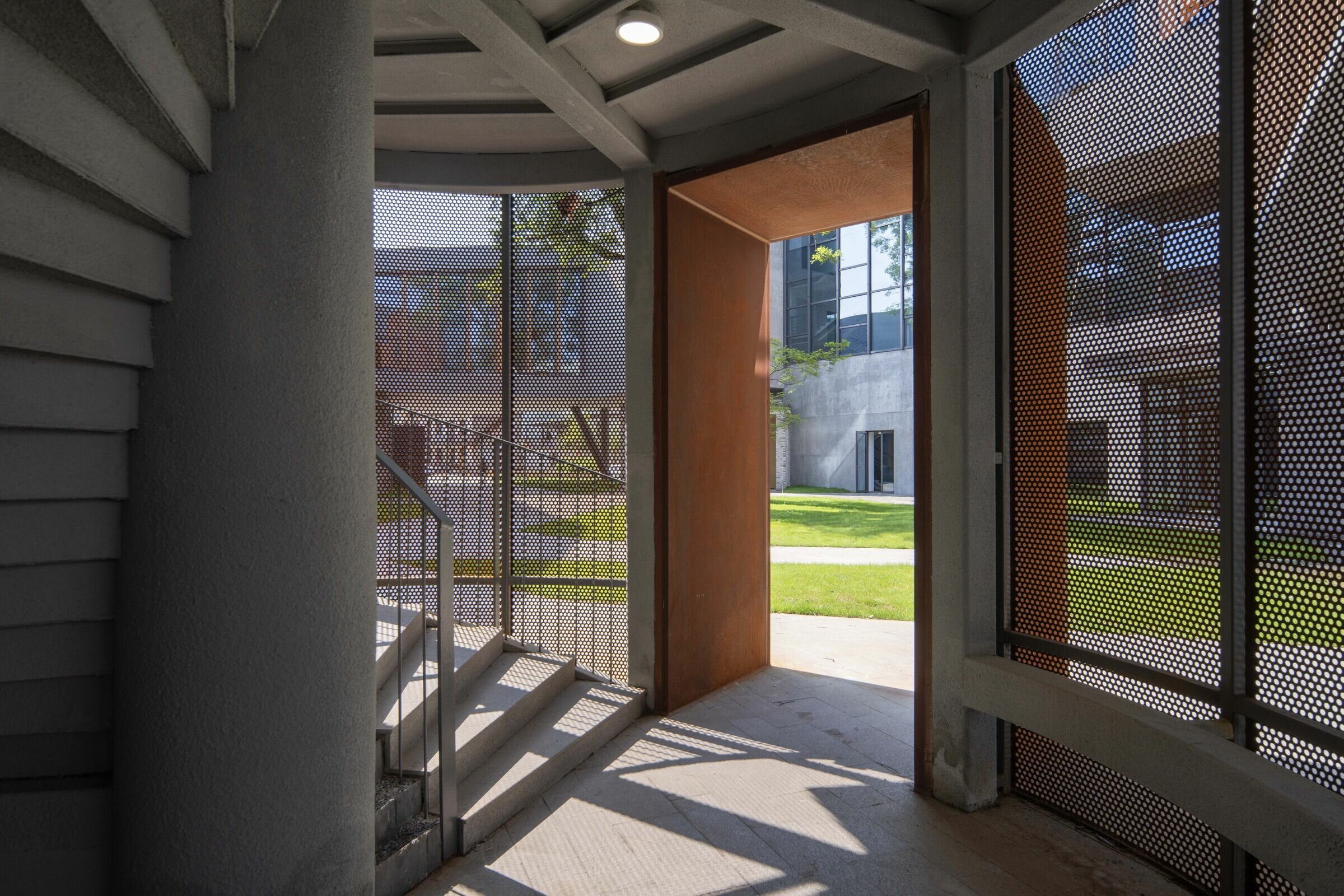
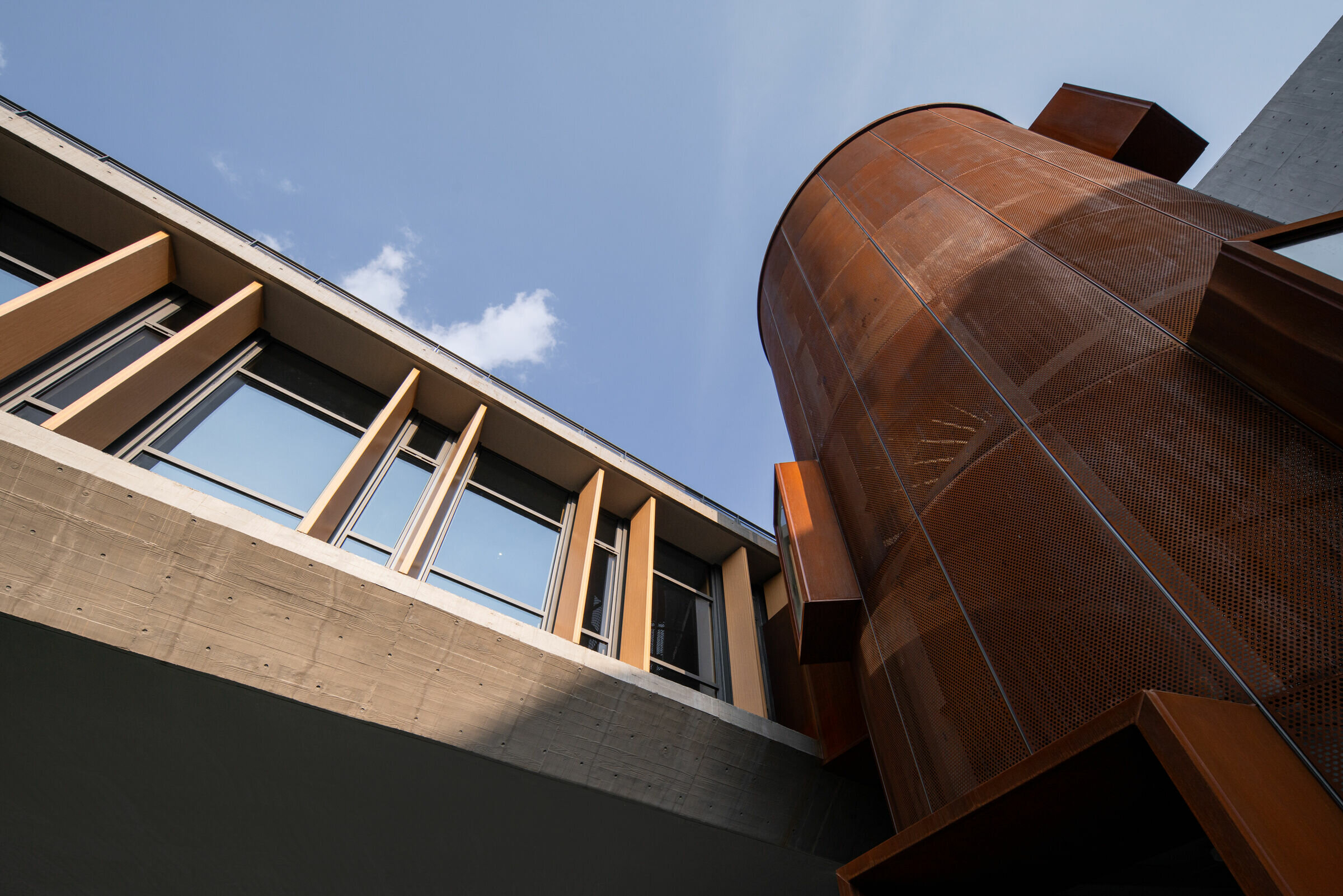
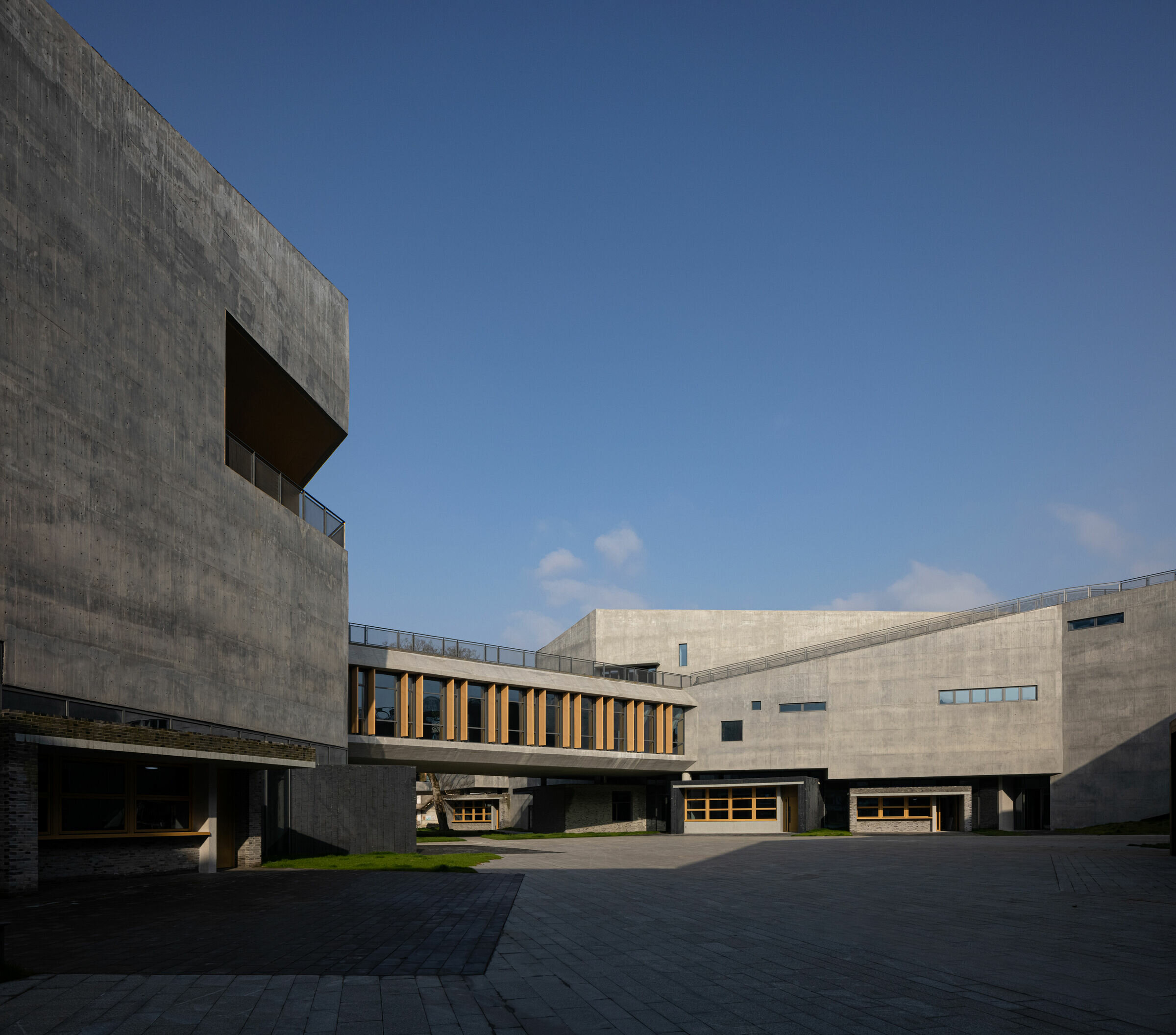
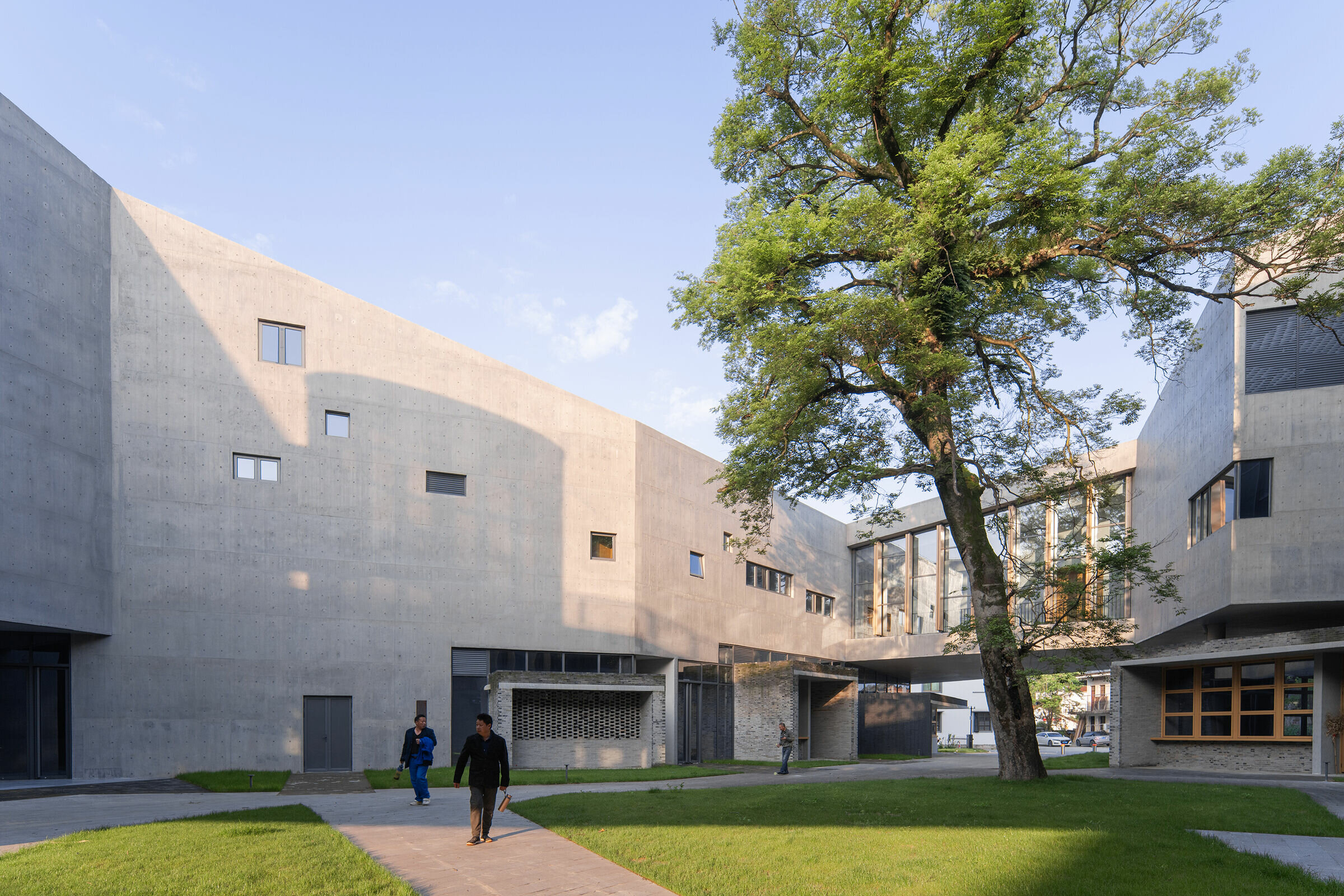
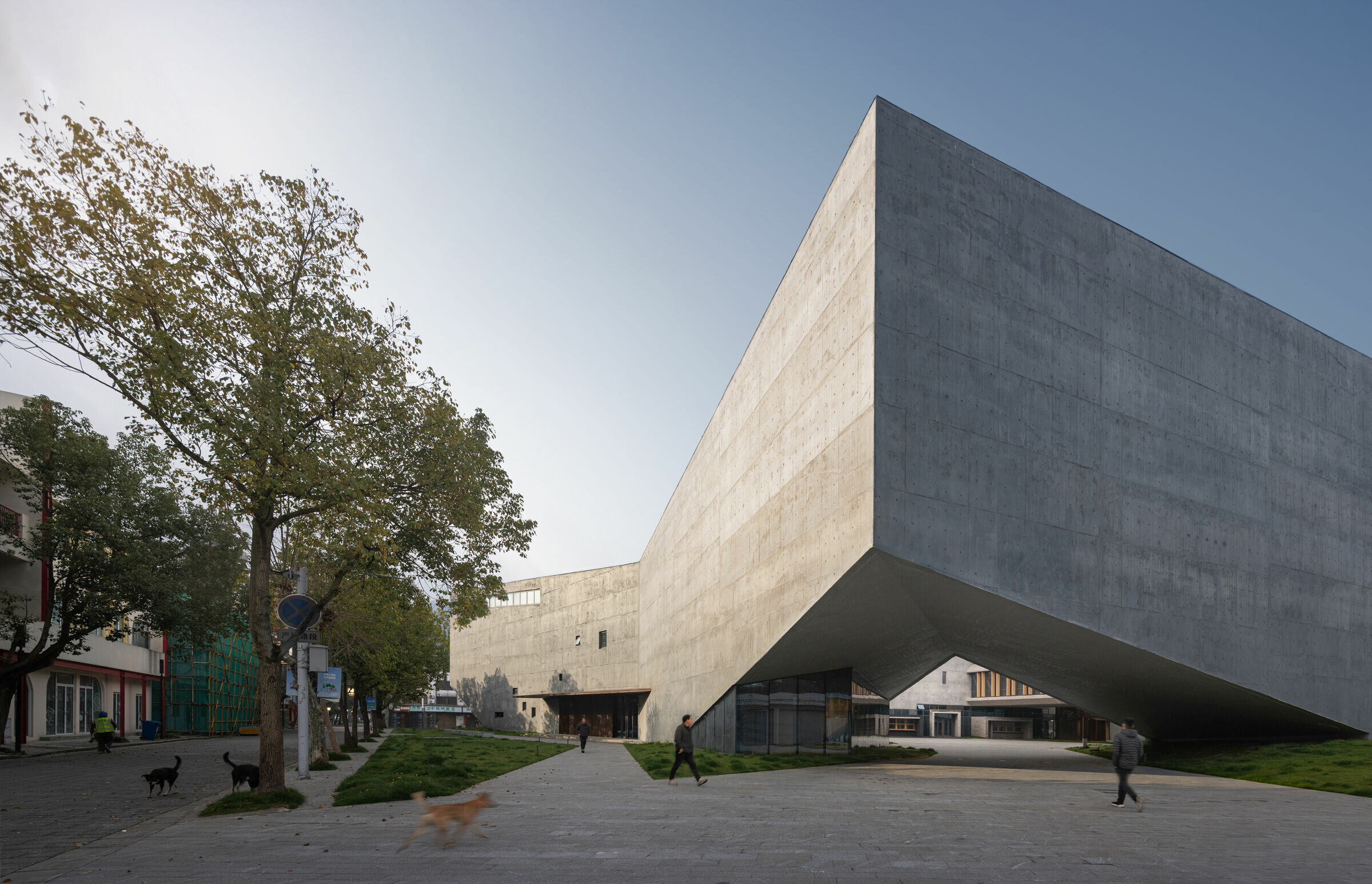
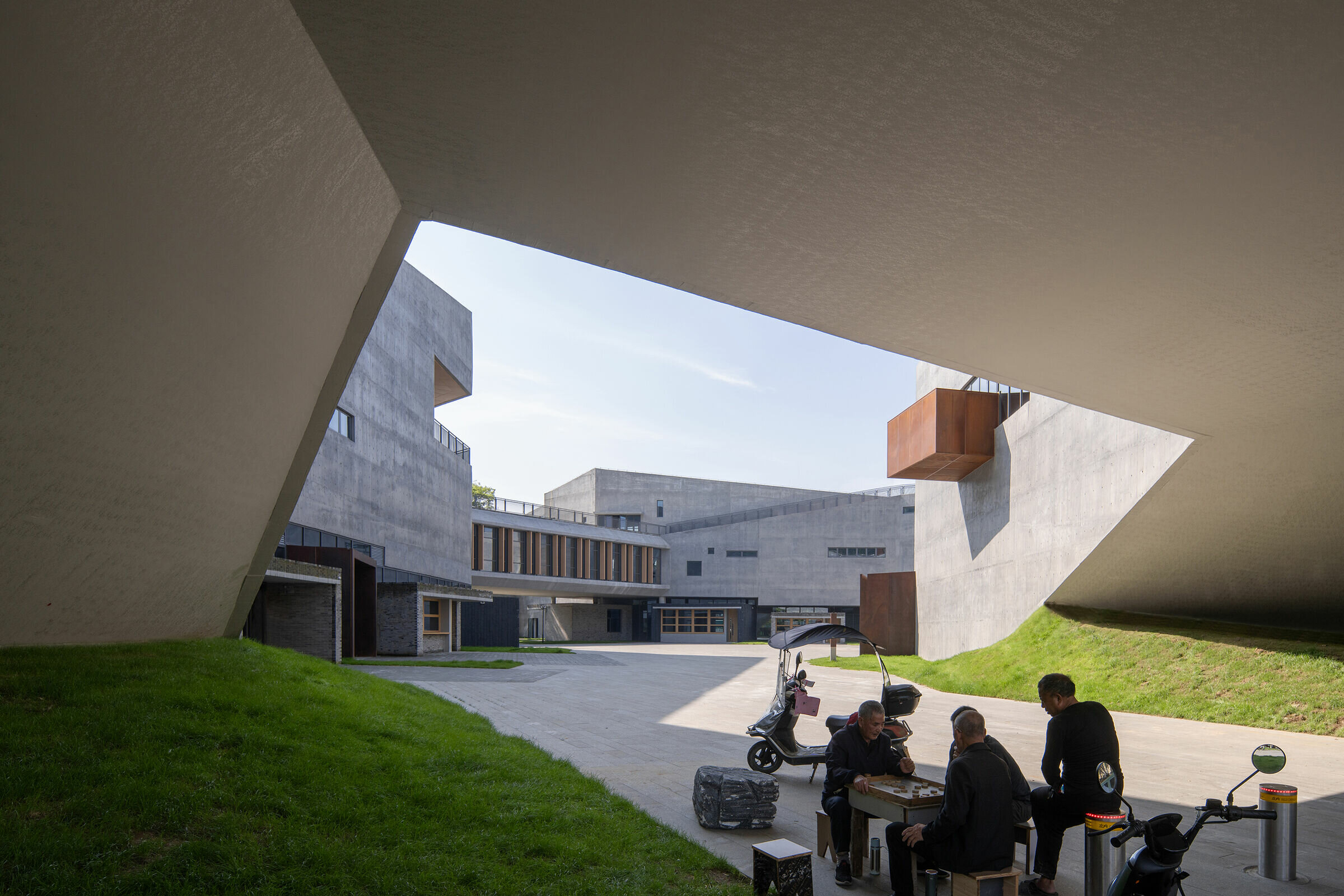
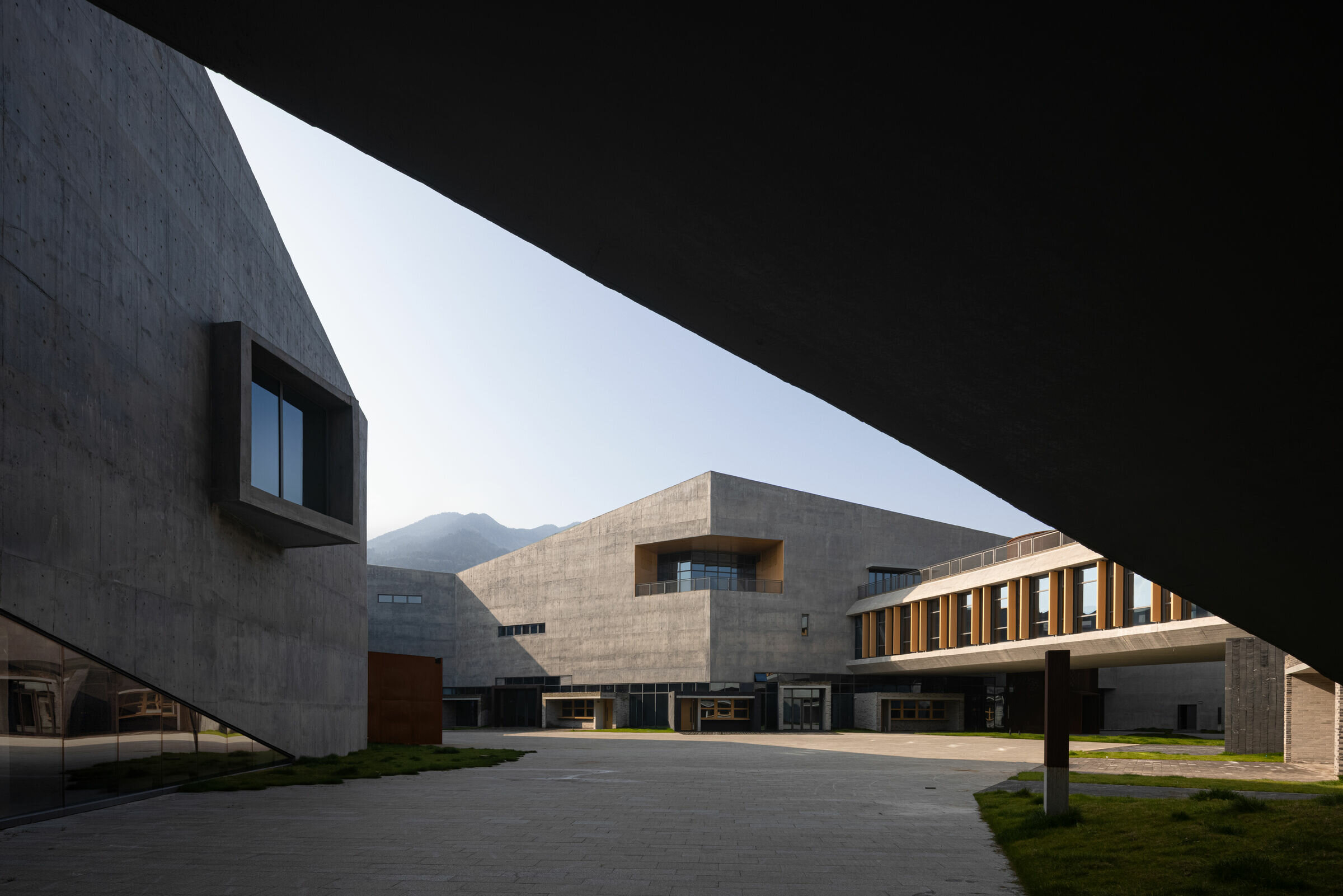
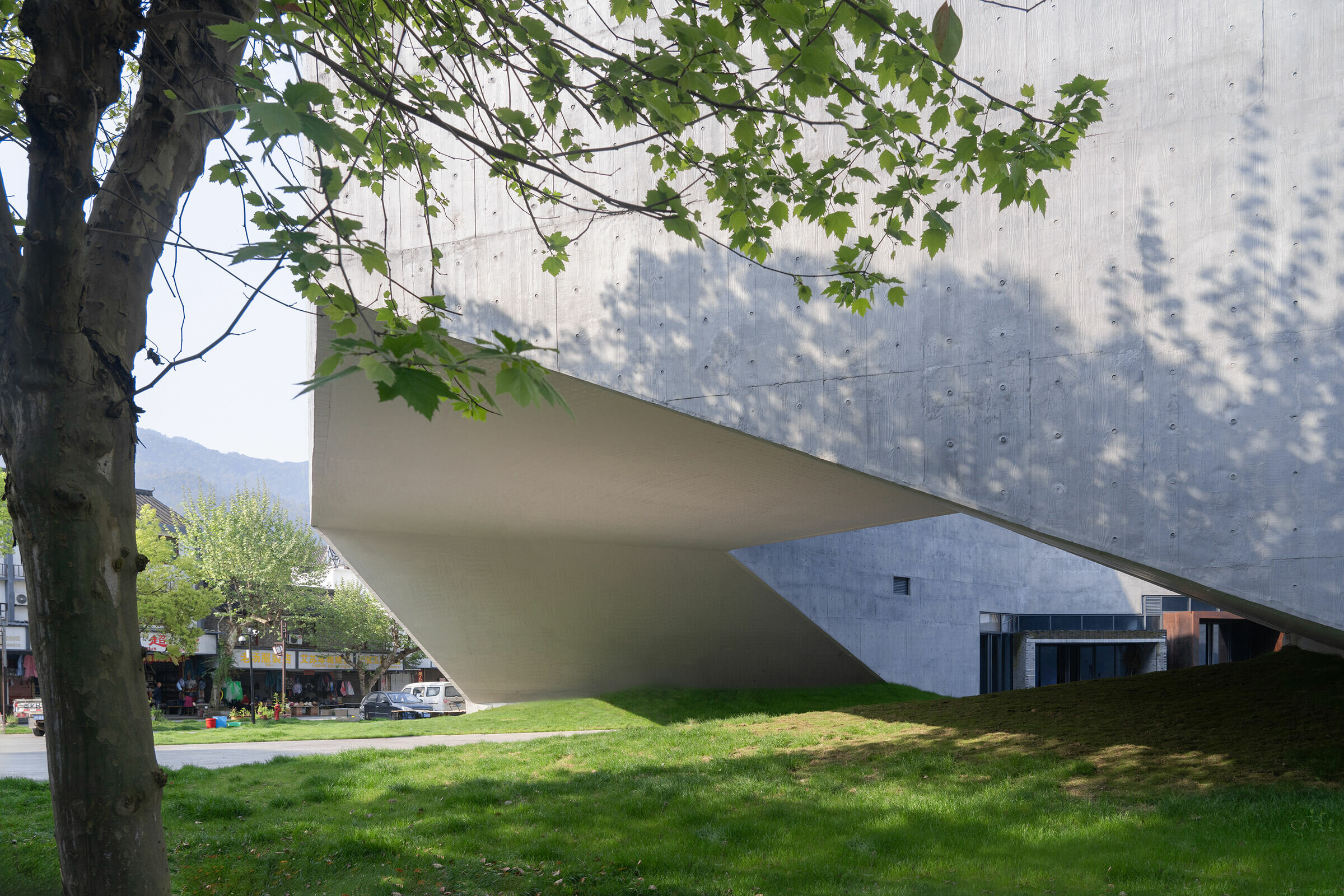
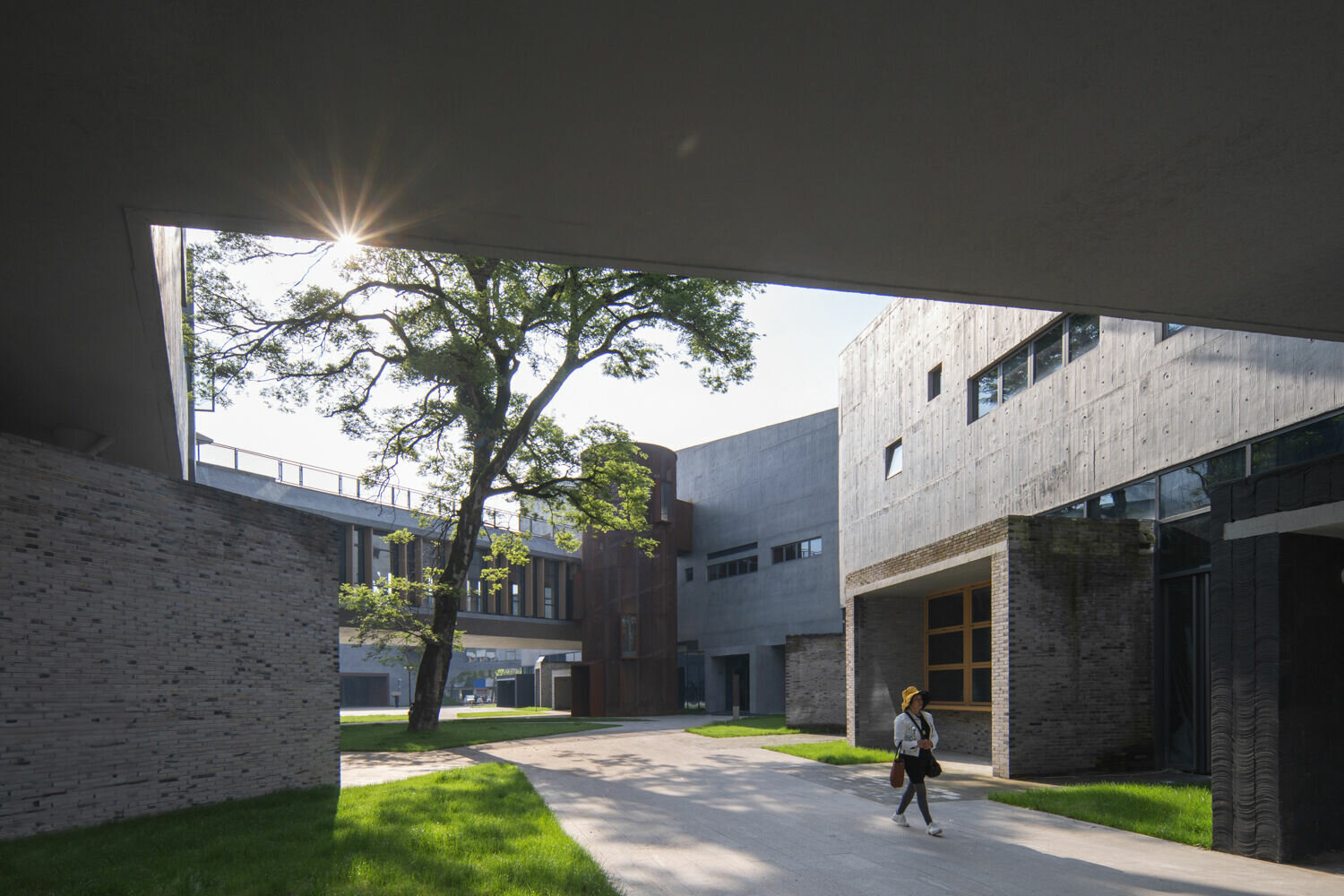
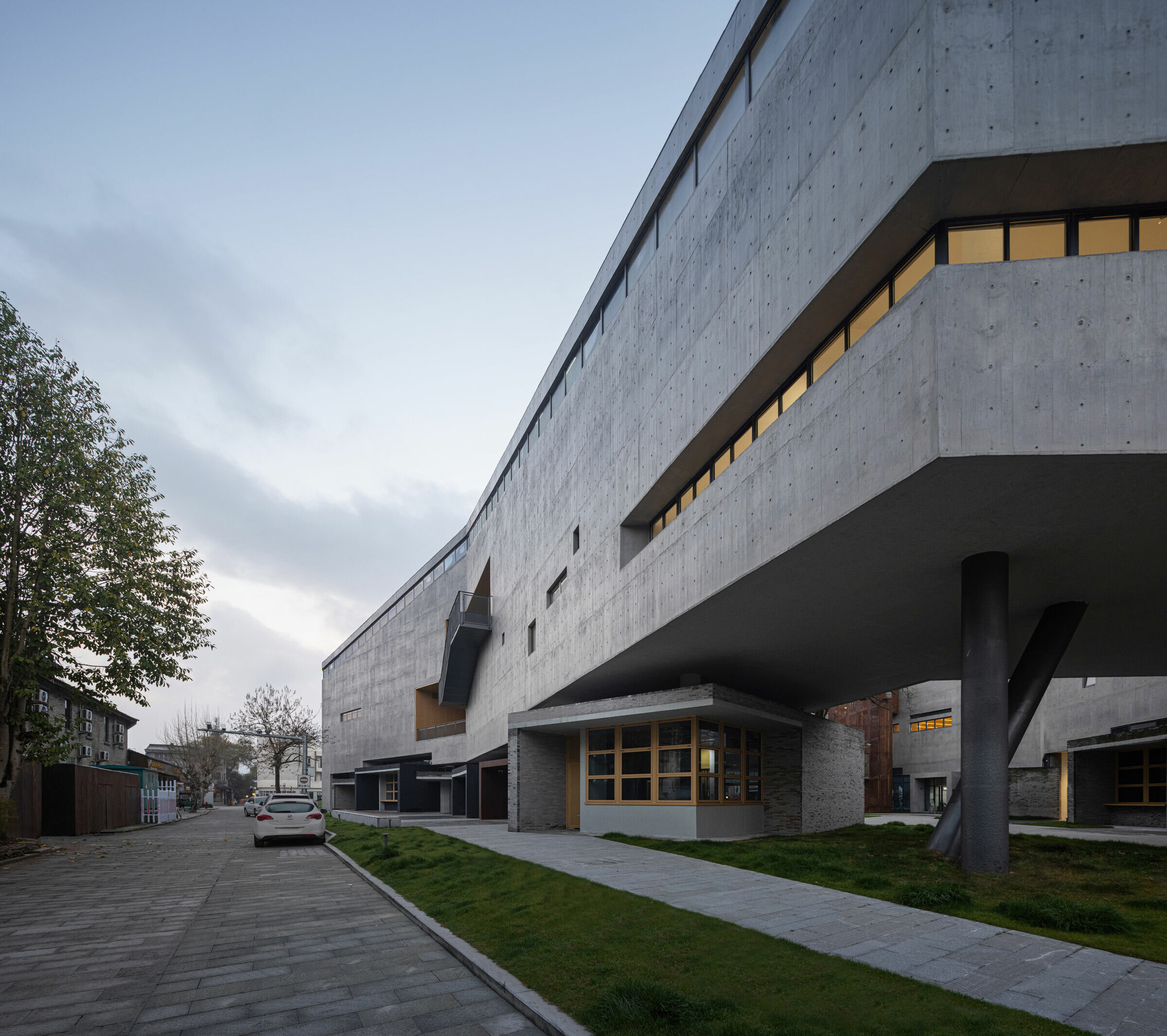
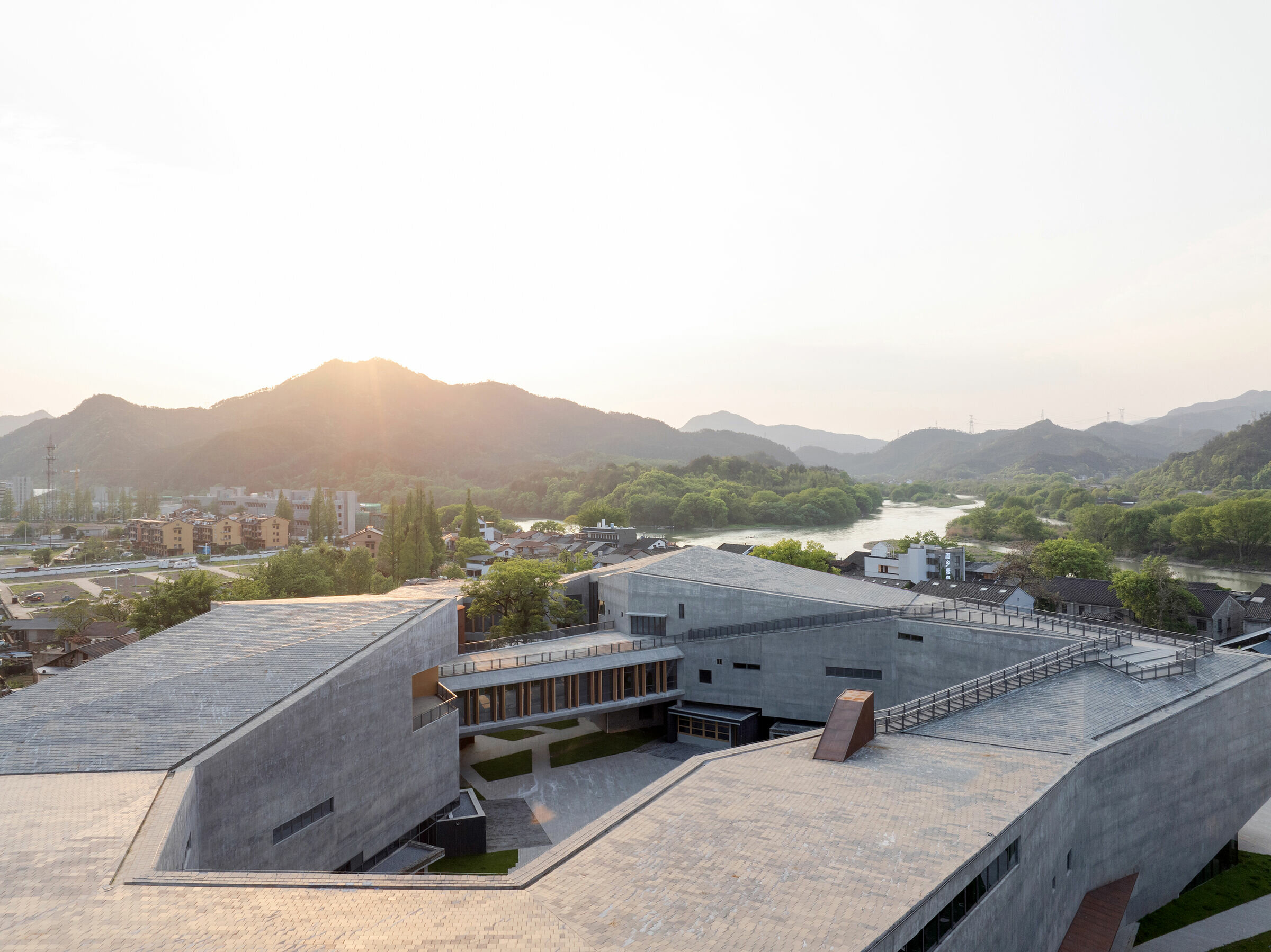
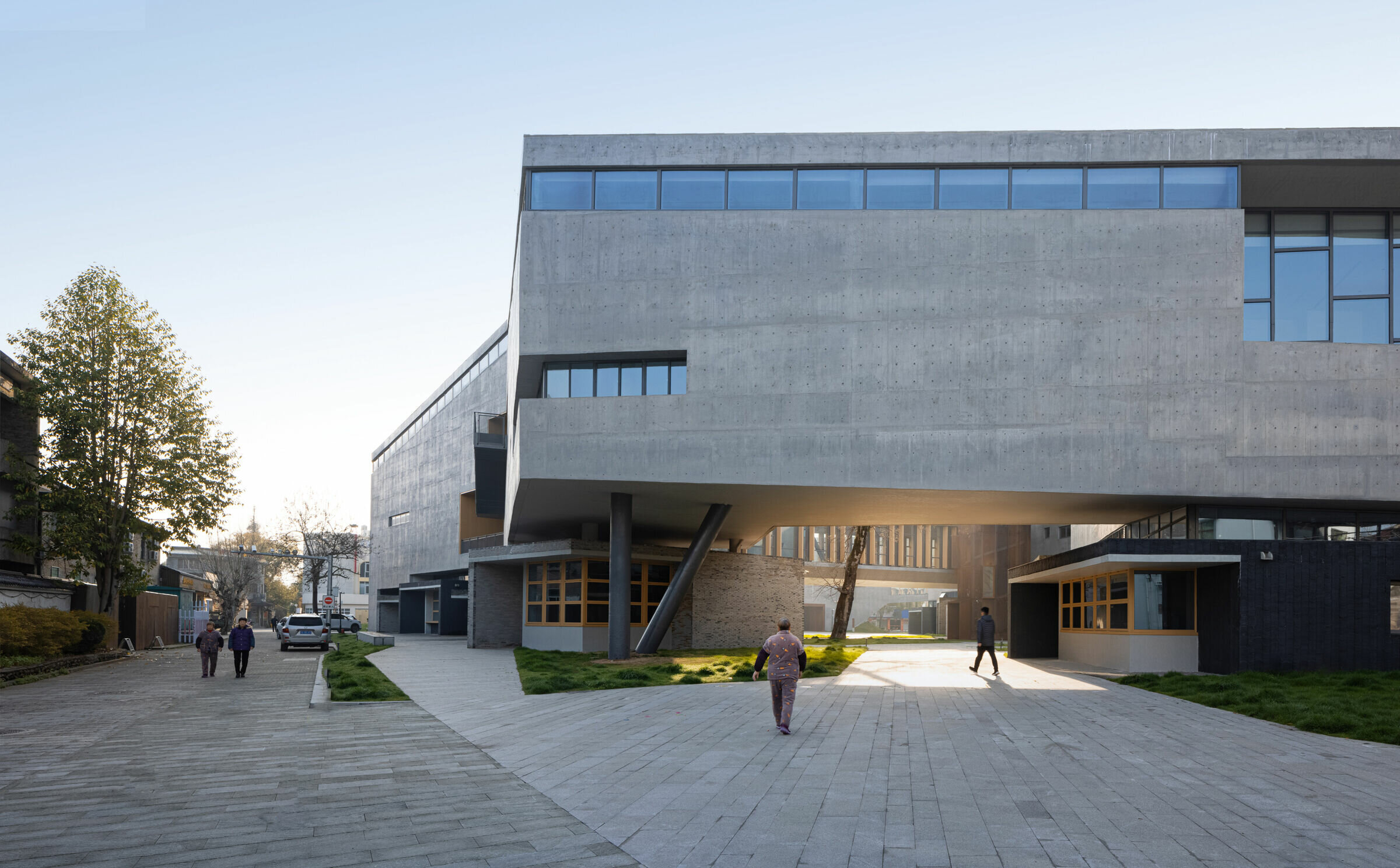
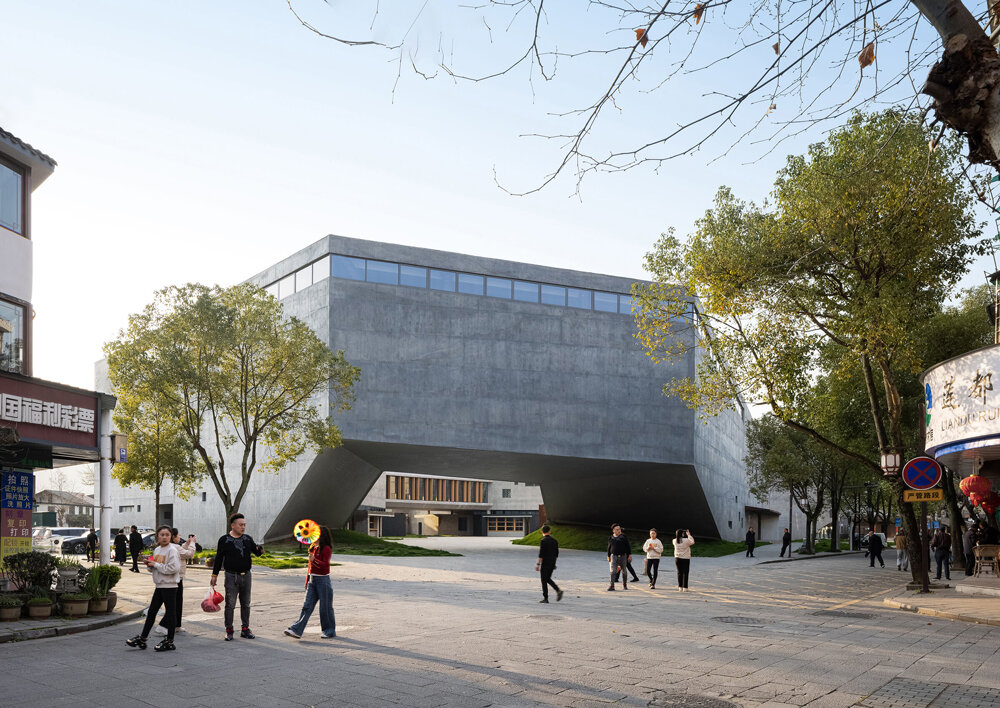
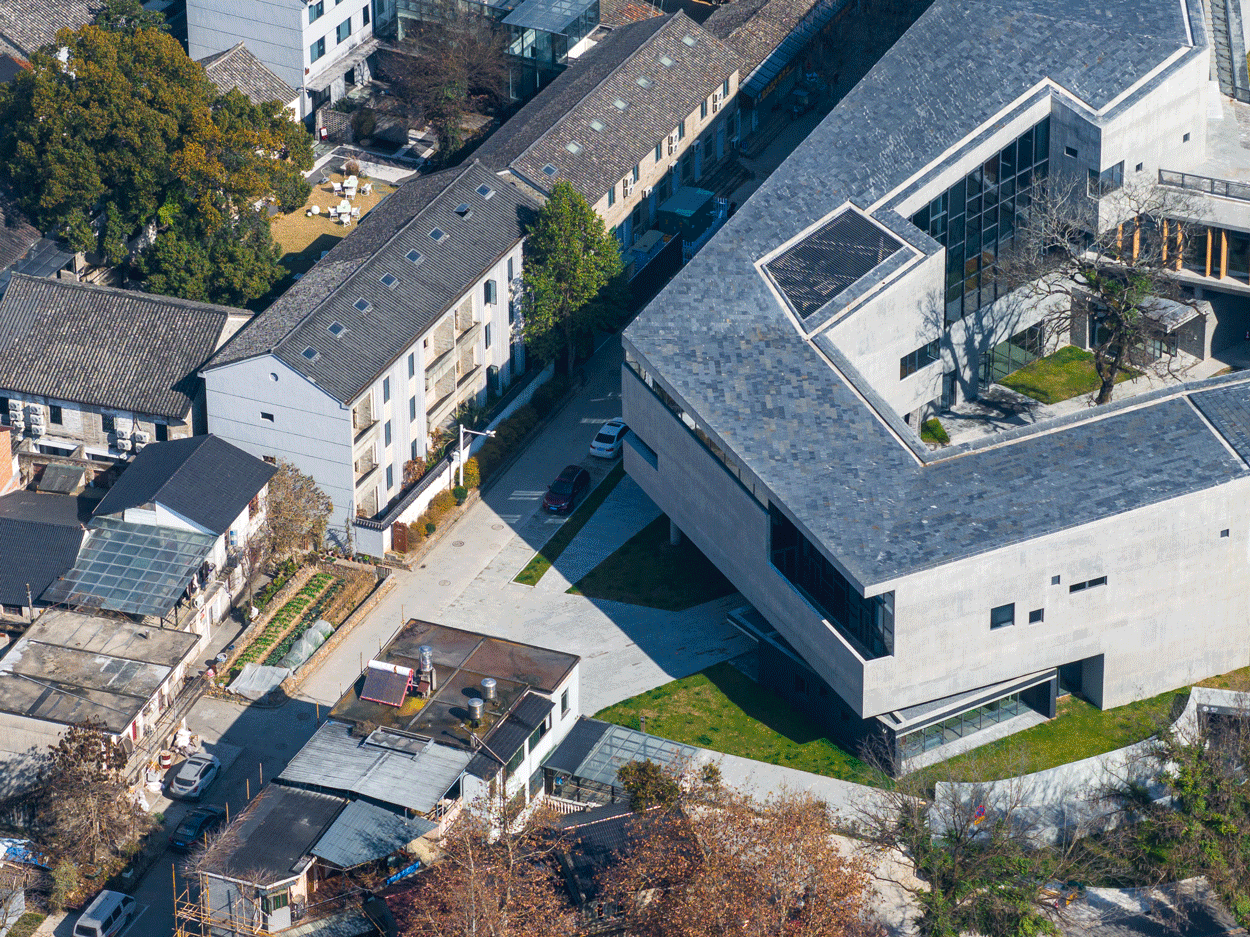
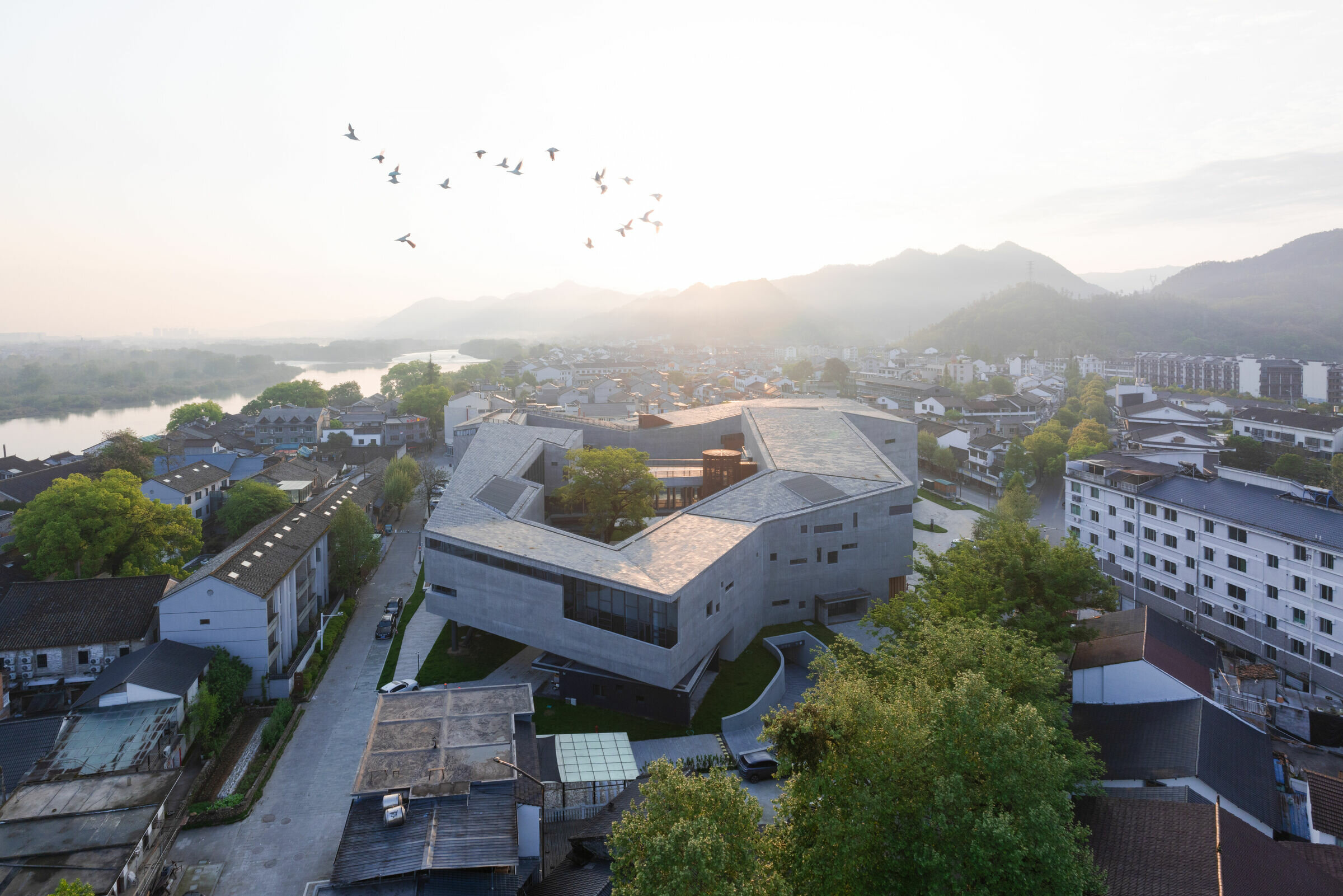
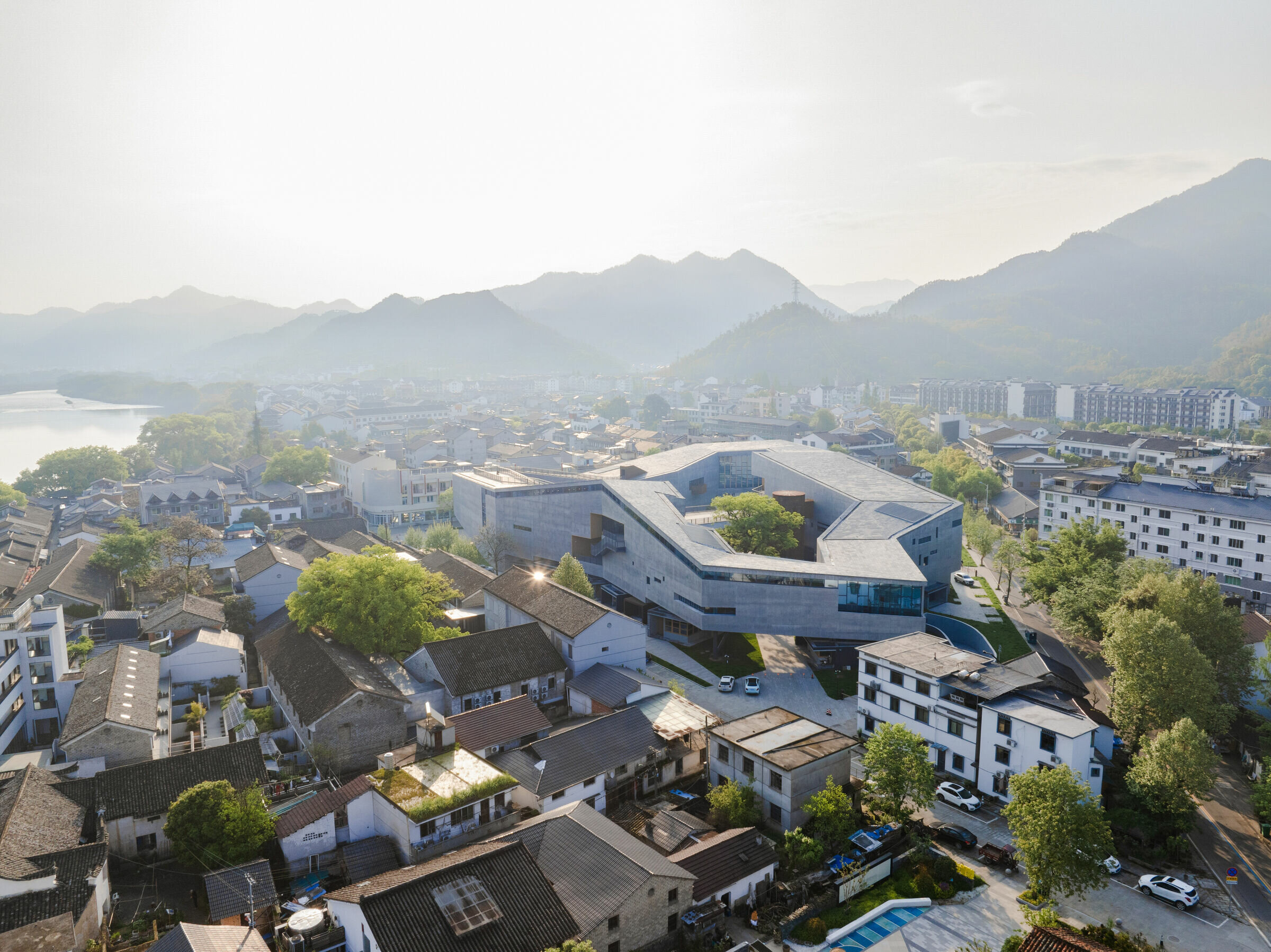
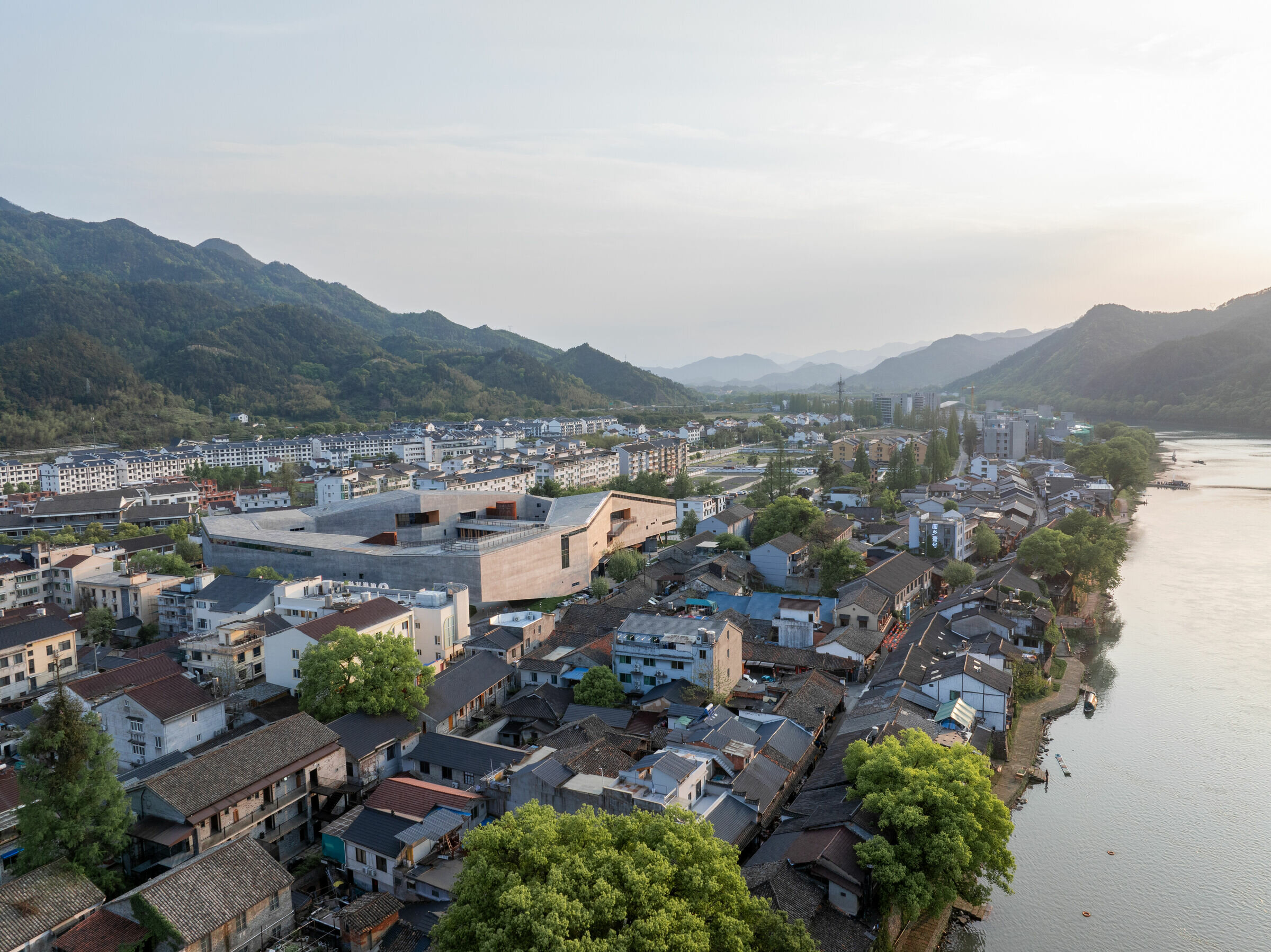
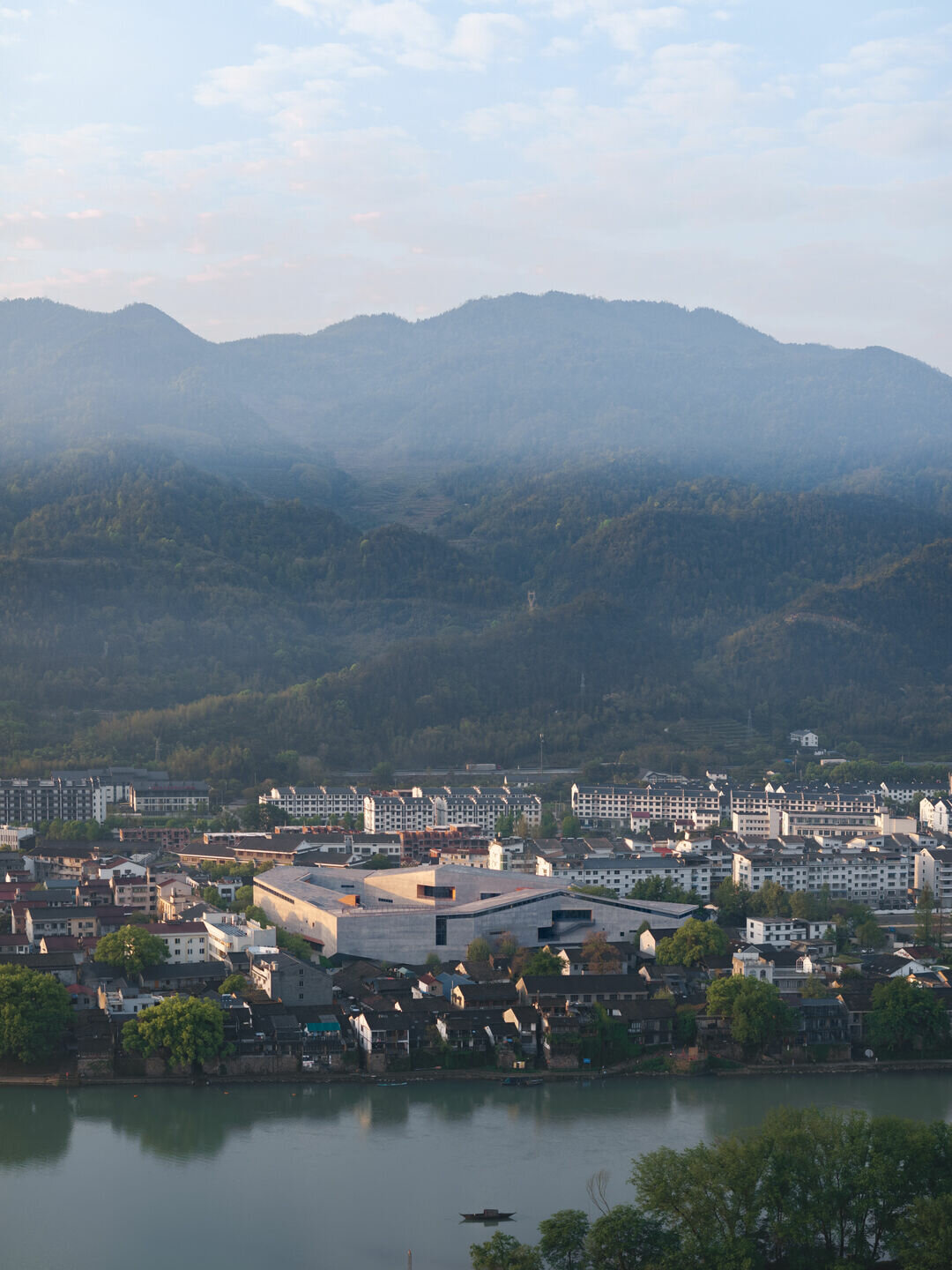
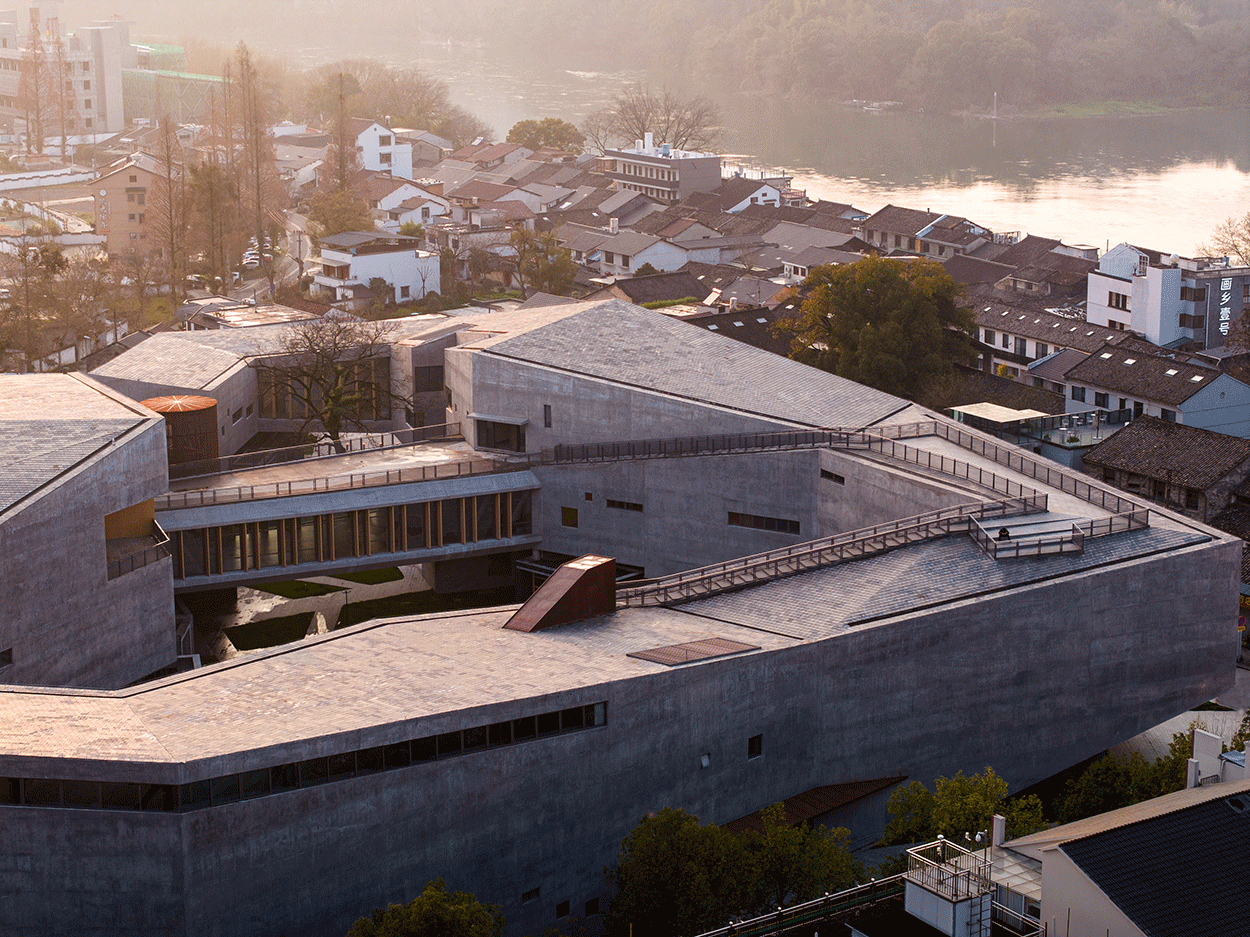
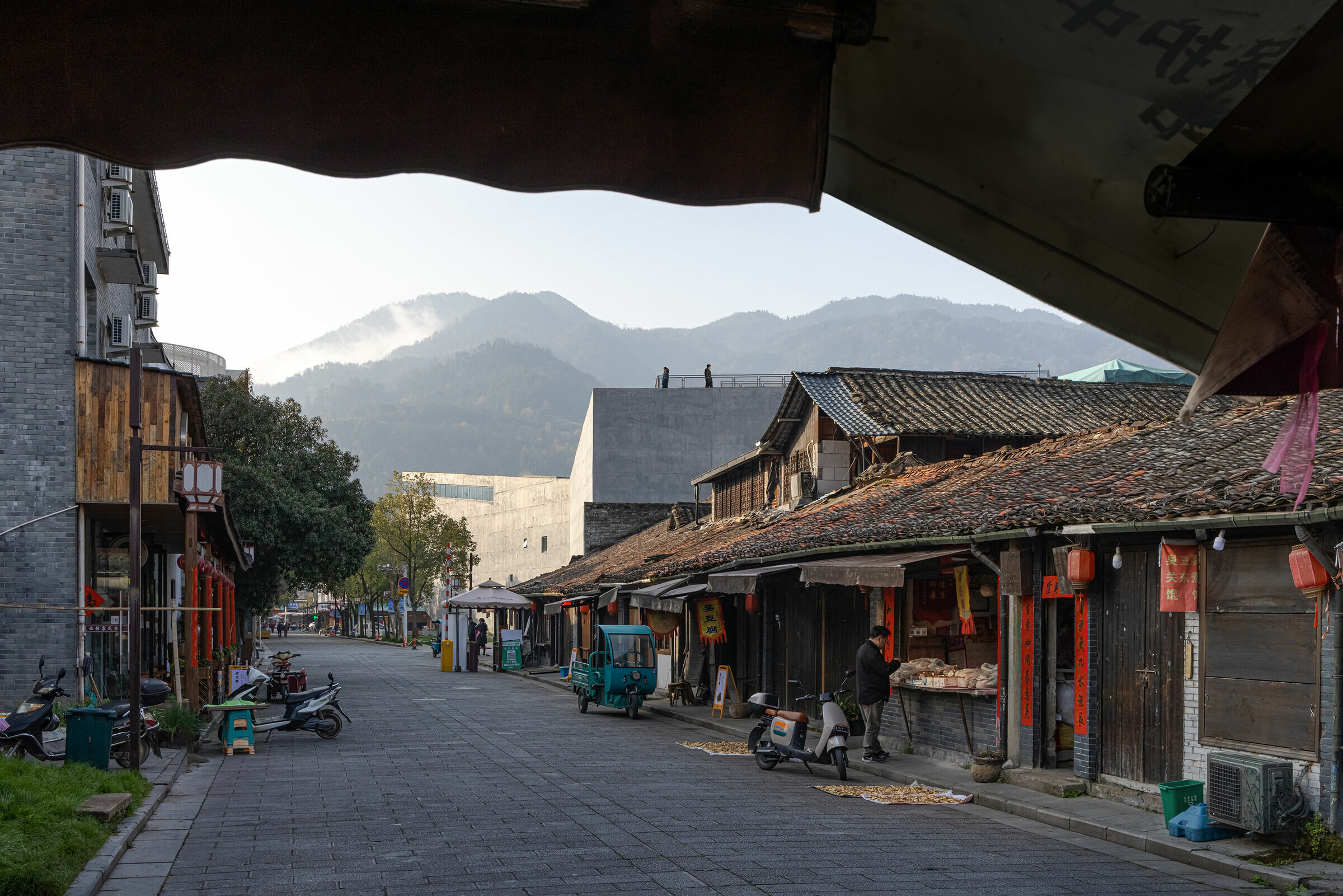
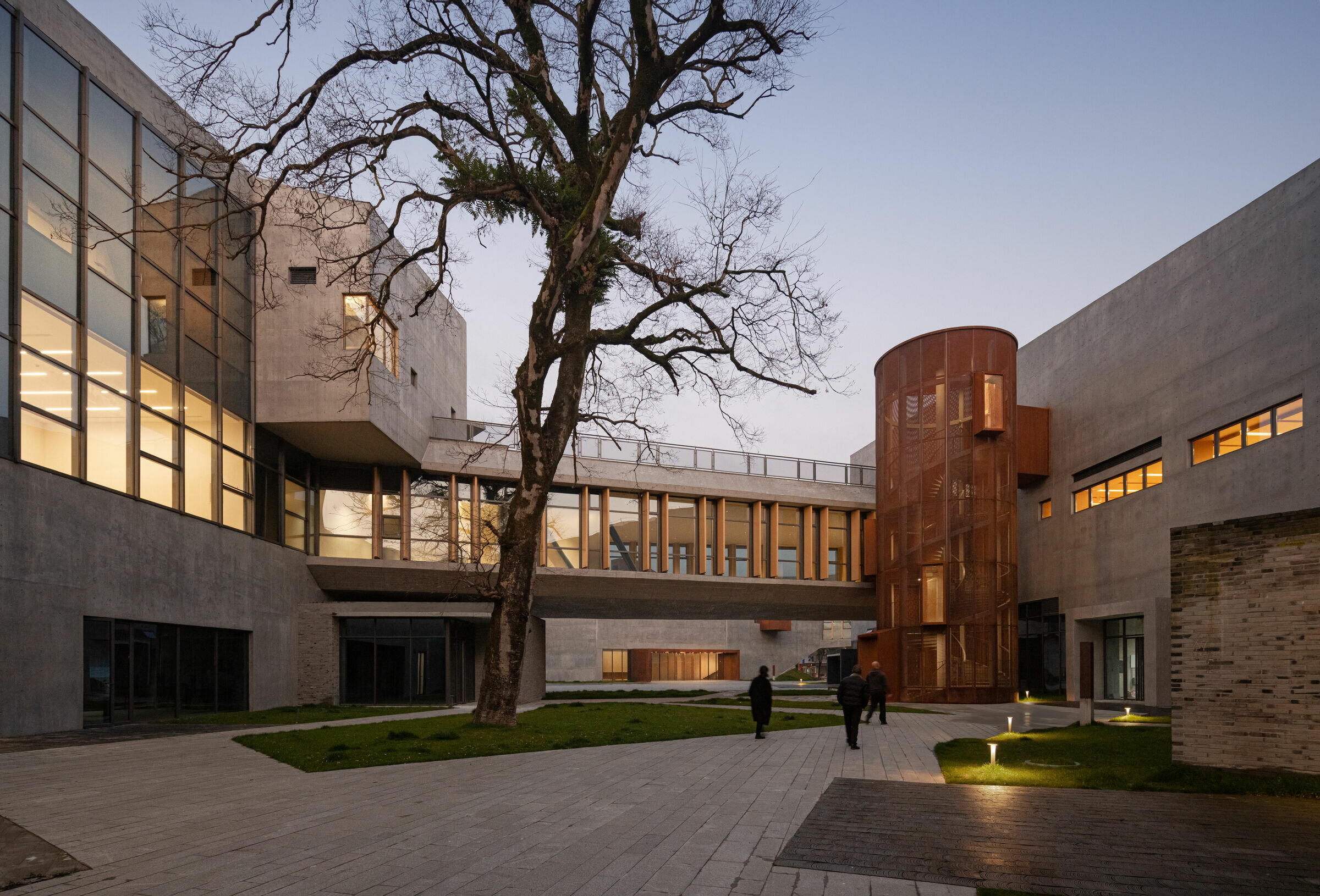
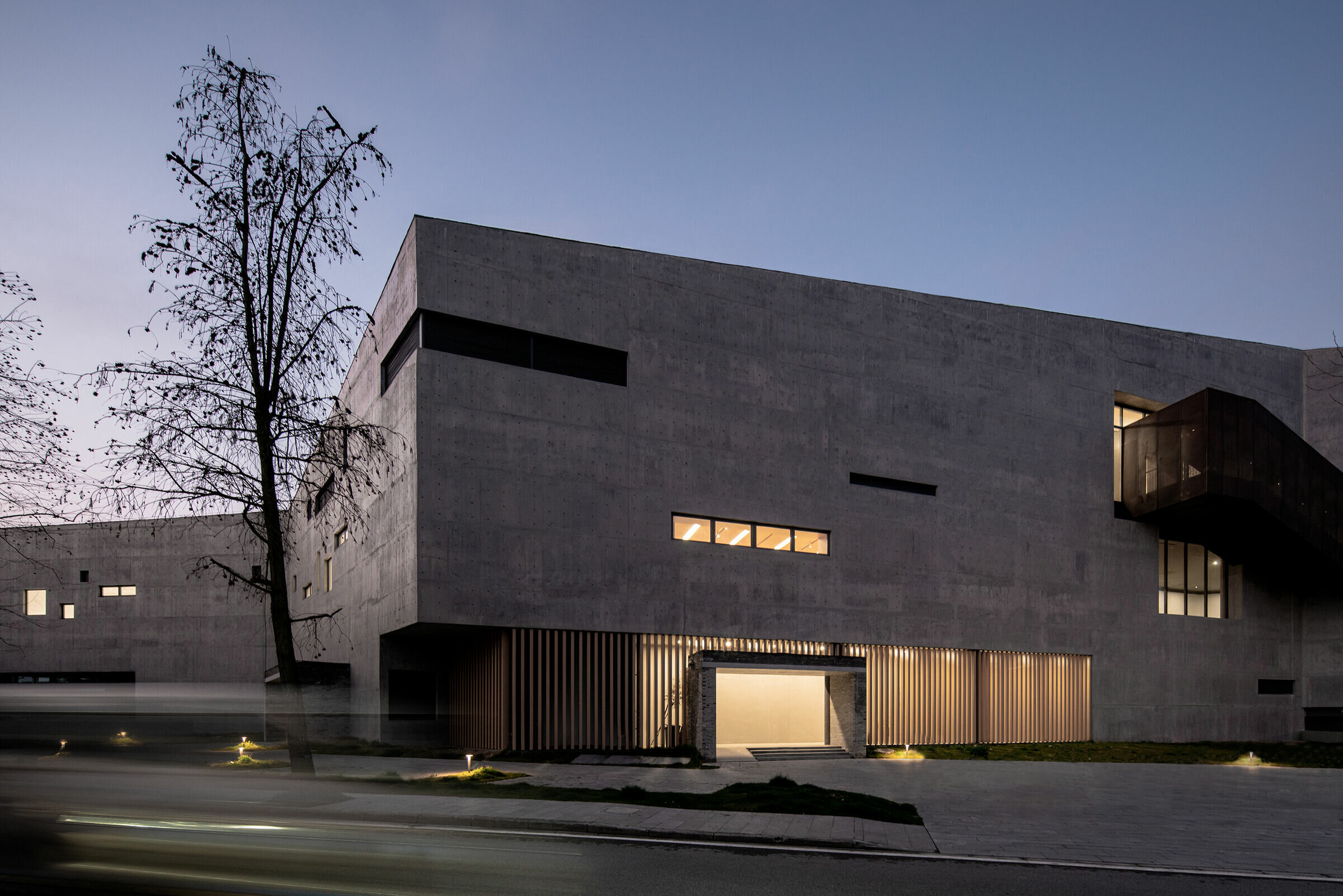
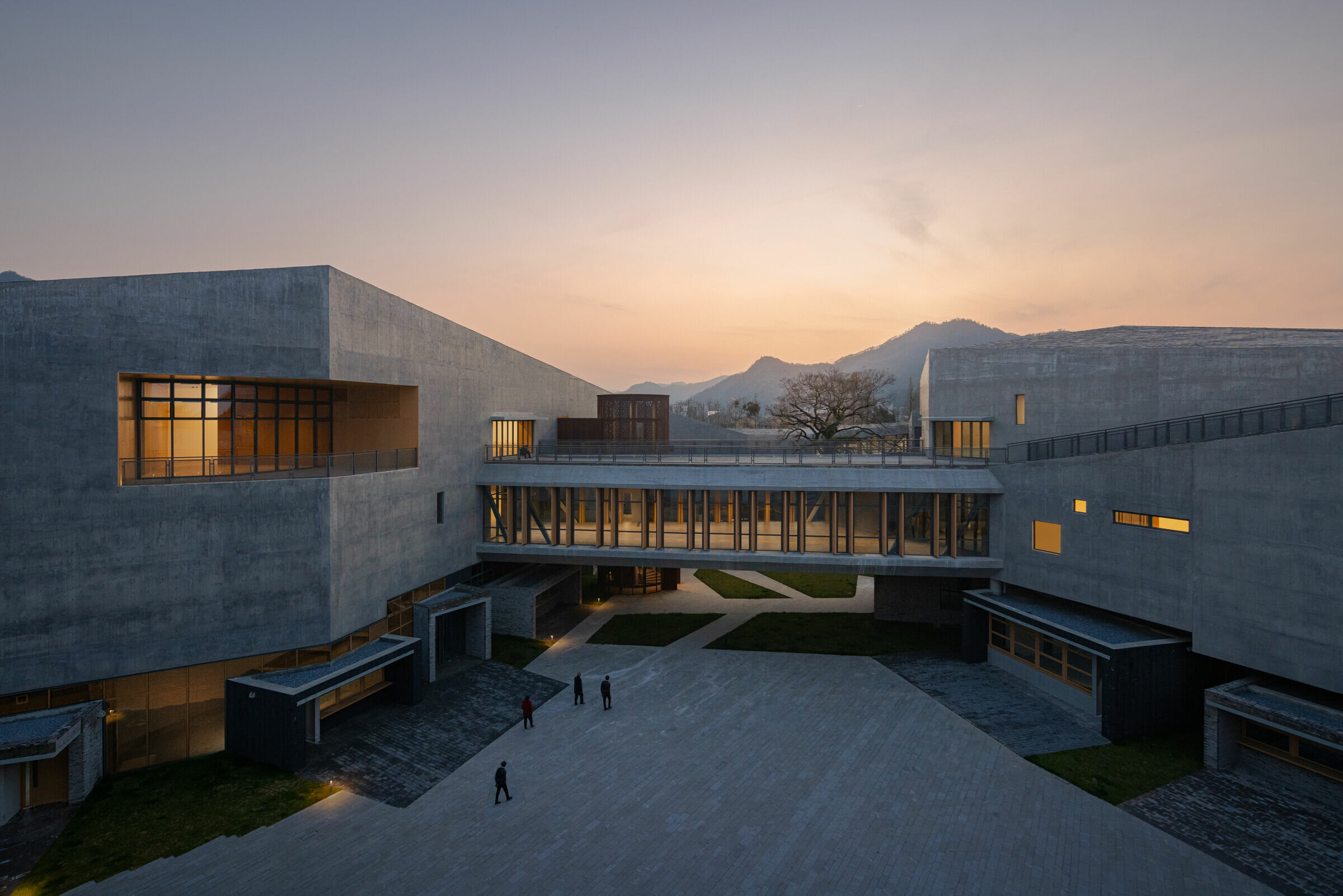
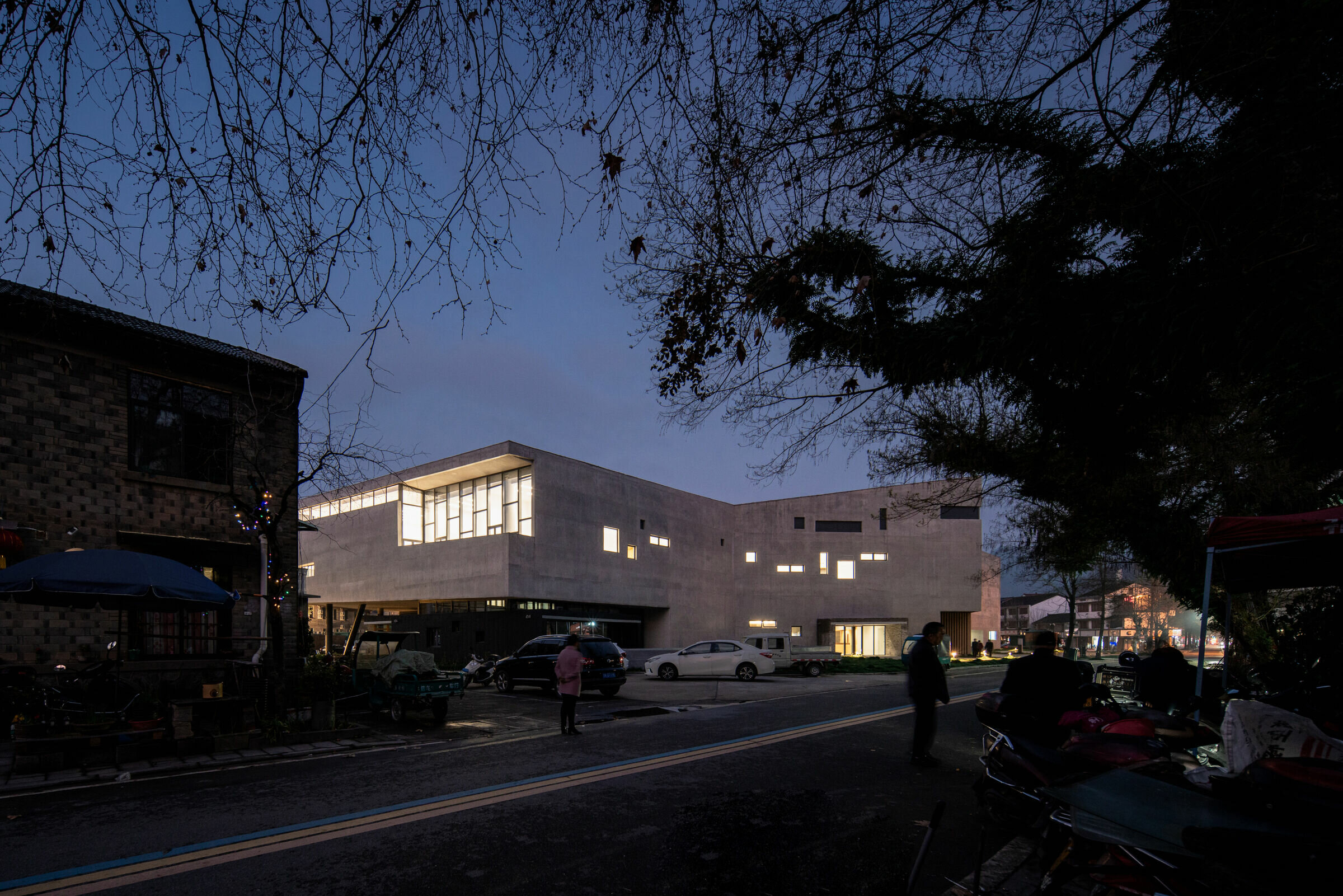
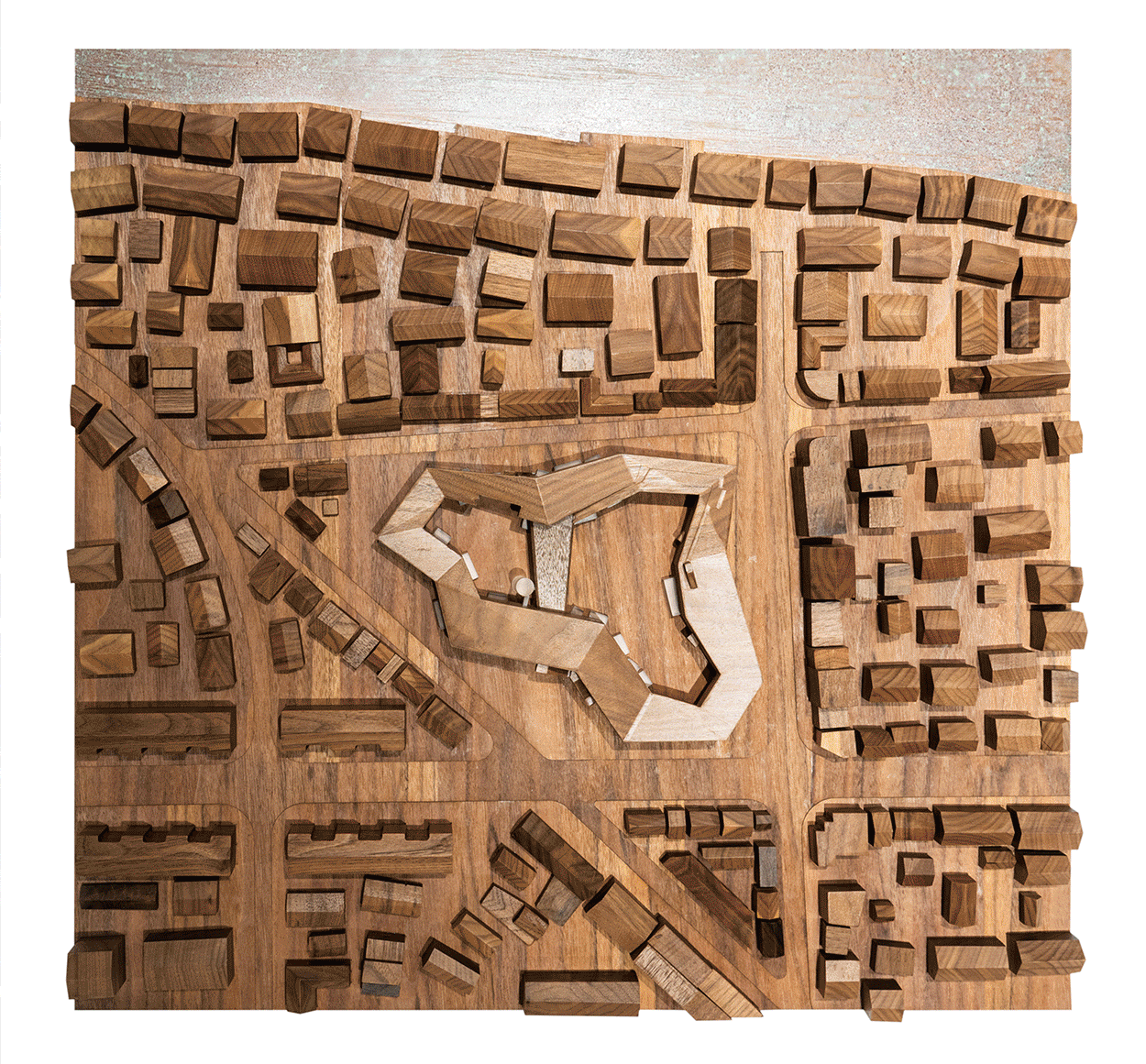
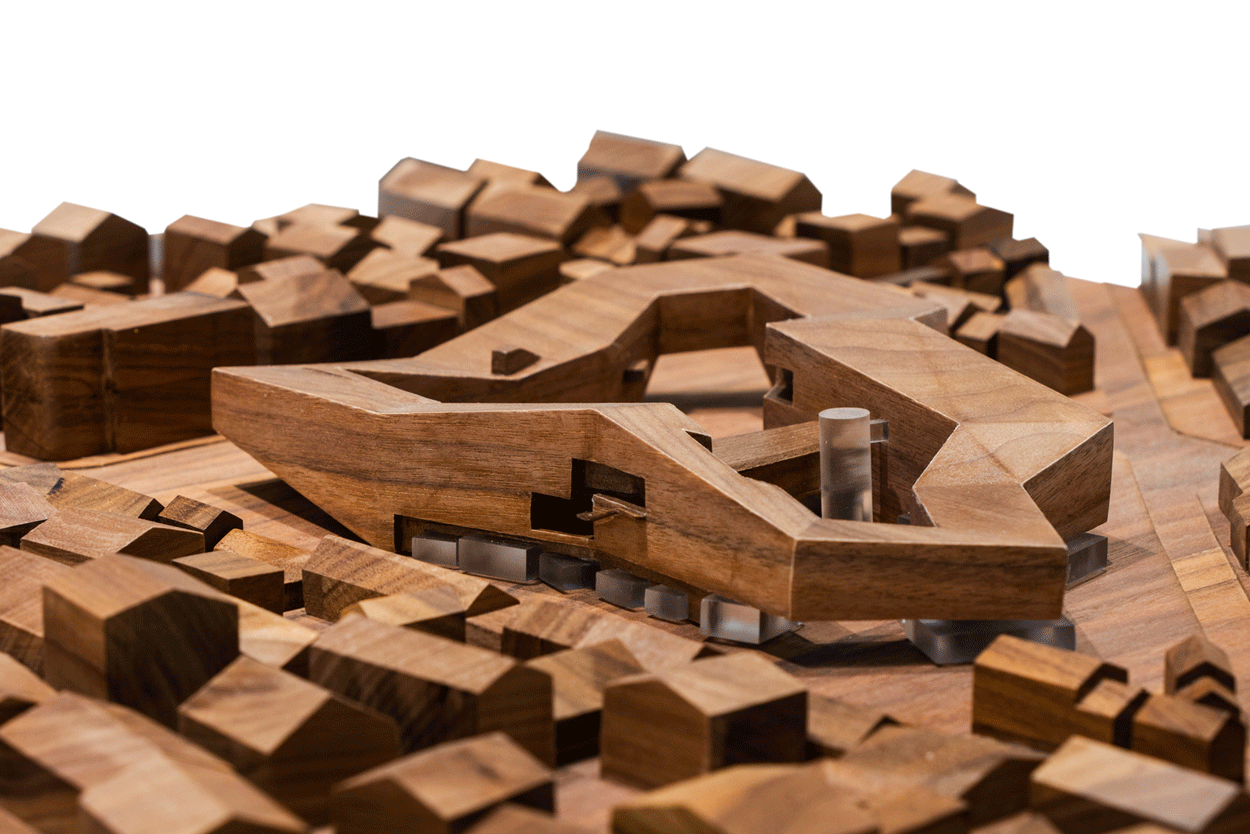
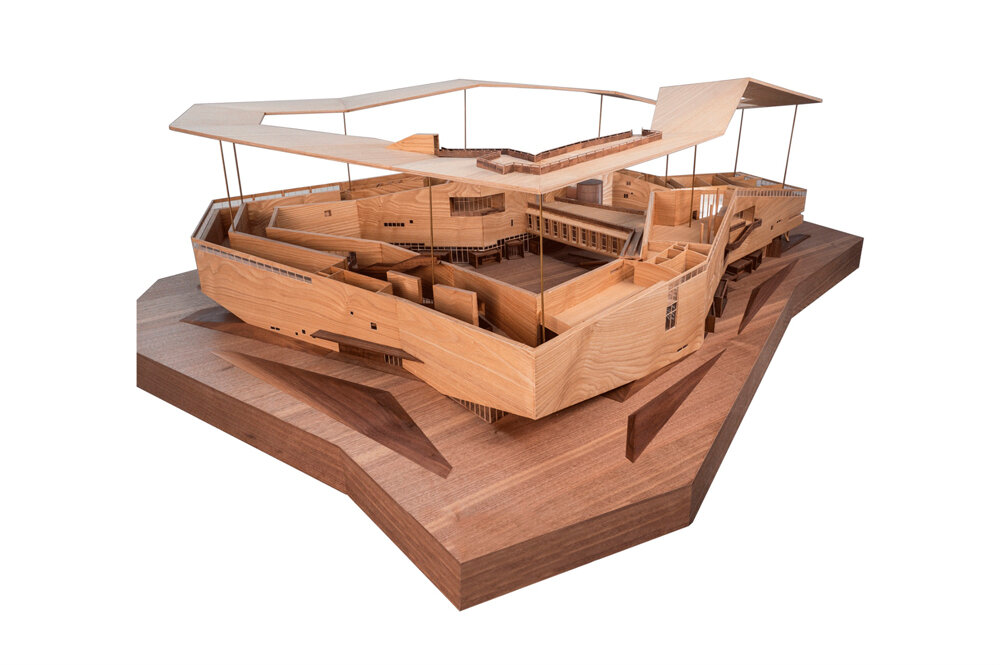
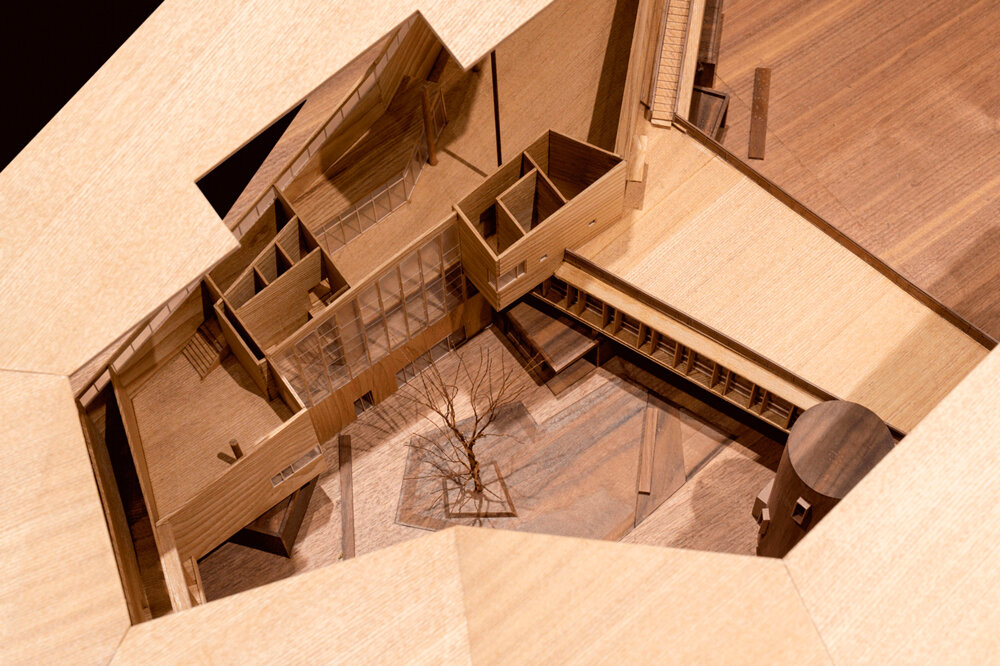
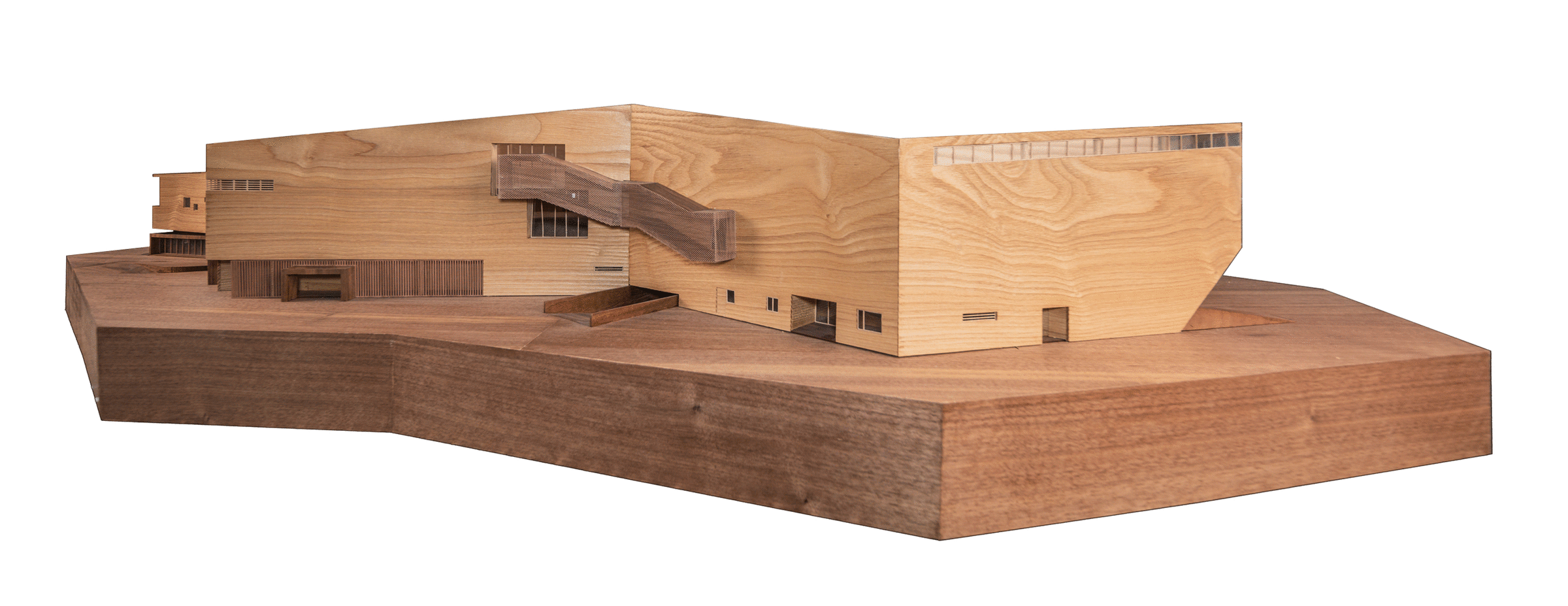
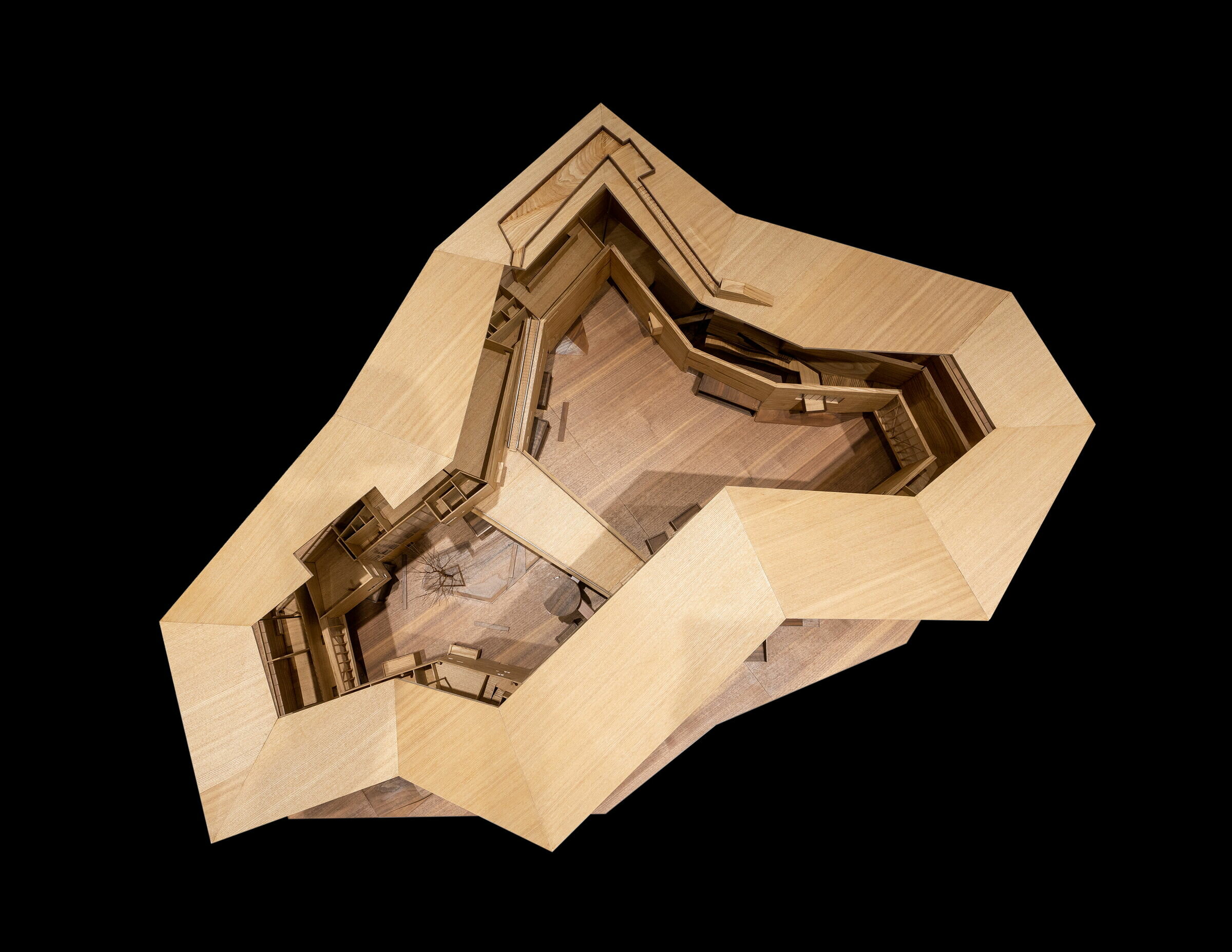
project info:
name: Zhejiang Lishui Guyanhuaxiang Art Center
architect: line+ studio | @lineplus_studio
lead designer: Meng Fanhao
design team: Li Xinguang, Hao Jun, He Yaliang, Xu Hao, Wan Yuncheng, Zhu Jun, Jin Yuting, Yang Li, Liang Guoqing, Zhang Sisi, Lv Siqi, Deng Hao, Ge Zhenliang, Qiu Limin, Chen Wen, Li Shangyang, Jin Jianbo, Rao Feier, Zhang Wenjie, Li Jun, Liu Xinhui
EPC manager: Lishui Liandu Tourism Investment Development Co., Ltd.
collaborating firm: Xicheng Engineering Design Group Co., Ltd.
curtain wall consultant: Shanghai Yidu Curtain Wall Construction Consulting Co., Ltd.
lighting design: Zhang Xin Studio, School of Architecture, Tsinghua University
building area: 13,738.96 sqm (above ground), 6,463.65 sqm (underground)
location: Guyan Painting Township, Lishui City, Zhejiang Province, China
photography: schranimage | @schranimage – Dong Image – line+
designboom has received this project from our DIY submissions feature, where we welcome our readers to submit their own work for publication. see more project submissions from our readers here.
edited by: christina vergopoulou | designboom
architecture in china (1801)
line+ studio (14)
museums and galleries (677)
PRODUCT LIBRARY
a diverse digital database that acts as a valuable guide in gaining insight and information about a product directly from the manufacturer, and serves as a rich reference point in developing a project or scheme.
